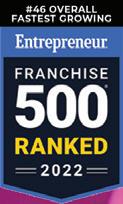2022 DOMINATORS
READY FOR GROWTH?














Chairman GARY GARDNER
CEO
THERESE THILGEN
Executive VP Operations SUE LOGAN EVP, Chief Content Officer DIANE PHIBBS
VP Business Development BARBARA YELMENE
Business Development Executives
KRYSTAL ACRE JEFF KATIS JUDY REICHMAN
Executive Editor KERRY PIPES
Managing Editor EDDY GOLDBERG
Creative Director CINDY CRUZ
Director of Technology BENJAMIN FOLEY Web Developer DON RUSH
Web Production Assistants ESTHER FOLEY JULIANA FOLEY
Director, Event Operations KATY COUTTS
Senior Support Manager SHARON WILKINSON
Senior Support Coordinator Franchisee Liaison
LETICIA PASCAL
Graphic Designer MICHAEL LLANTIN
Video Production Manager GREG DELBENE
Event Operations Manager
CHELSEA WEITZMAN
CARTY DAVIS JOHN DIJULIUS MATT HALLER JERRY KAHN DARRELL JOHNSON LAUREN OWEN CAROL SCHLEIF MATHIEU STEVENSON
HELEN BOND COLLEEN MCMILLAR SARA WYKES
Greetings fellow franchisees,


I am honored and grateful to serve as the chairman for this year’s Multi-Unit Franchising Conference to be held April 25–28 in Las Vegas at Caesars Forum. I have been attending the conference for more than 20 years, and no other conference has had a bigger impact on my business more so than this one. Simply said, the Multi-Unit Franchising Conference is the best in franchising today—and I attend most of them!

Wayne Gretzky was one of the greatest hockey players of all time. When asked about his success as a player, he said, “I skate where the puck is going to be, not where it’s been.” The Multi-Unit Franchising Conference is where the puck is going to be.
We all read books, listen to podcasts, and attend conferences for the purpose of making e ective decisions today that will bring us the best results tomorrow. At the Multi-Unit Franchising Conference, you’ll have the opportunity to learn what is coming next and what the future holds for our businesses. You’ll leave better prepared to respond to and face the challenges and opportunities of operating a franchise business in today’s environment.
There’s a common saying that has become almost clichéd: “Your network is worth more than your net worth.” At the Multi-Unit Franchising Conference, you’ll meet other high-performing franchisees and develop friendships and relationships you can learn from and that will help carry you forward, both personally and professionally. At no other gathering will you have the opportunity to meet as many like-minded individuals who are willing to share their knowledge and experience.
The Multi-Unit Franchising Conference will present you with many of today’s best resources and the latest opportunities in franchising. At no other conference will you have access to as many vendor resources to help run your business more e ciently and e ectively, along with potential opportunities to fuel your future growth.
I promise you—and I speak from experience—that this conference will energize and revitalize you like no other. You’ll return ready to inspire and motivate your team to see the bigger picture and be better prepared to navigate your business into the future. And, who knows? You may just find that next opportunity. I look forward to seeing you there!
With gratitude, Gary Robins Franchisee of Supercuts & Ideal Image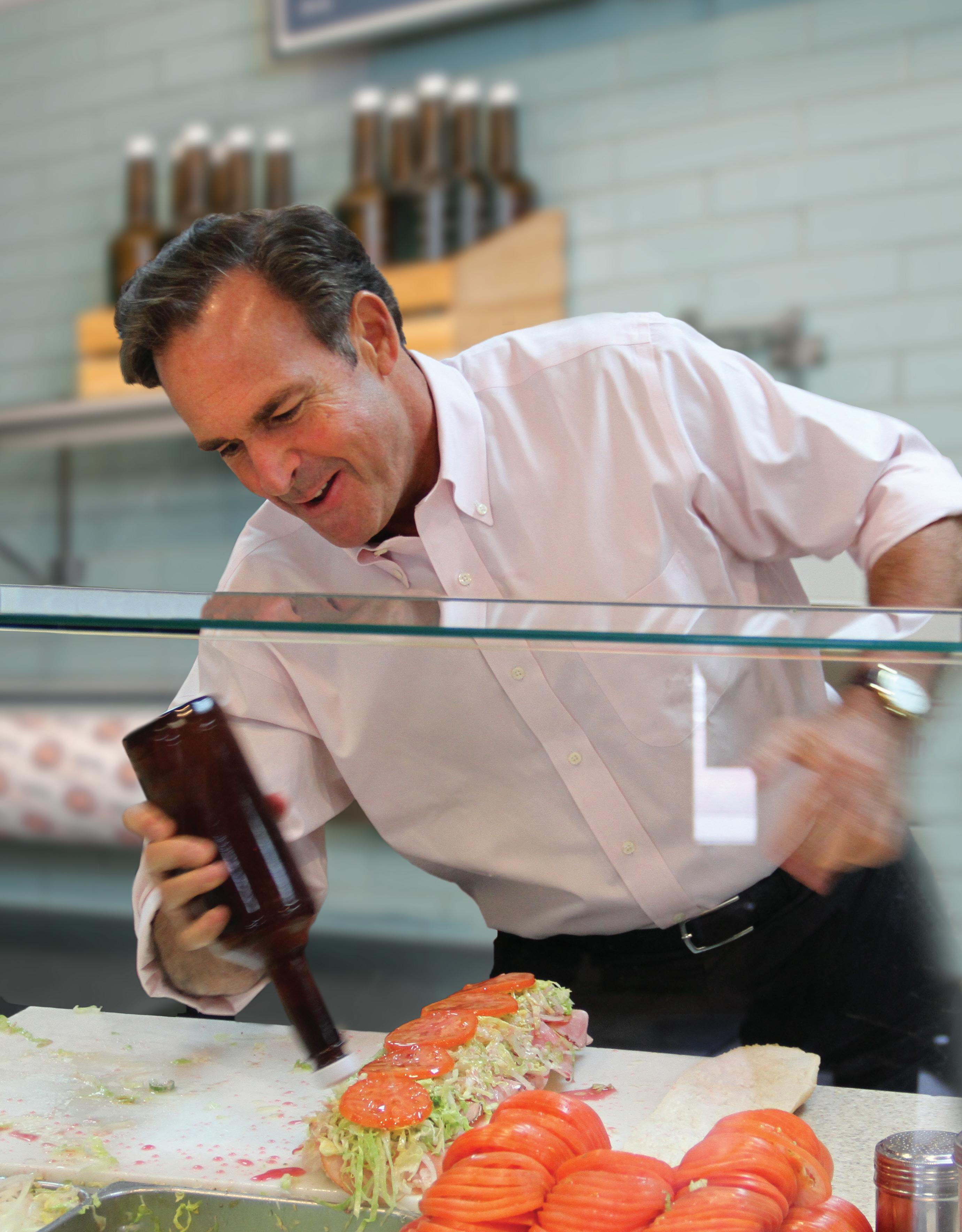
At 42, Jiger Patel is enjoying life to the fullest.
He’s surrounded by a loving family that includes “two demanding teenagers and a dog full of energy.” His grow ing franchise portfolio of 36 restaurants across 5 states features multiple Qdobas, Checkers, The Greene Turtle, and Dave’s Hot Chicken locations.
Born and raised in India, Patel immigrated to the United States in 2000. His first U.S. job was behind the counter at Dunkin’ Donuts. Nine months later he was in a management position. Within 18 months, he was an operating partner.
He went on to own and operate numerous Dunkin’ locations over the next few years. Following some strategic divestitures, he began franchising with Checkers in 2013, The Greene Turtle in 2015, and last year signed on with Qdoba to open more than 60 of the brand’s locations in New York’s Tri-State area and Southwest Florida. This past summer, he signed on to develop Dave’s Hot Chicken. Eight of the popular chicken restaurants are already in the pipeline.
“When reviewing our franchise portfolio, we recognized that there was an opportunity when it came to fast-casual dining,” he says. “We’re eager to keep growing. Qdoba and Dave’s Hot Chicken fit the bill for everything we look for in an investment.”
Patel believes that operating across full-service, fast-casual, and QSR segments “gives us a balanced approach to grow our portfolio and a better understanding of the industry at large.”
After two decades in franchising, 2022 has been another banner year of growth and expansion for Patel. There are enough restau rants under construction, combined with planned acquisitions, to double his company’s size. His revenue target for 2022? “$50 million, of course.” Don’t be surprised if he adds another concept before the year is done... all part of his quest to own and operate 100 restaurant units by 2025.

First job: Started my first job at Dunkin’ Donuts as a clerk with the goal of learning the business, moved up to a management position in 9 months, followed by an operating partnership in 18 months. Formative influences/events: To be part of a breakthrough coffee brand and work with a well-respected franchise group where I learned how best to scale teams and brand without compromising high standards. This has served me well to start my career. At different stages of my career, I can point out many people who had huge impact on me and guided me: Charlie Patel, Jay Patel, Pranav Desai, Raj Mahadevia, Bob Barry, and Geo Concepcion.






Key accomplishments: I have been able to maintain my businesses and personal relationships while achieving my passion to grow my portfolio. Also, with my experience and knowledge, I am able to guide budding young entrepreneurs to achieve their business goals.
Biggest current challenge: Finding a proper balance between work and home life. With two teenagers, I have trouble dividing my time to focus on both aspects of my life.
Next big goal: To own and operate 100 restaurant units by 2025.
First turning point in your career: The biggest turning point in my career came by forming a strategic partnership with my dear friends who had the same vision as I had. The foundation of our partnership was that we complemented one another. I knew I had certain weaknesses, but also learned that I’m surrounded by many smart and talented individuals who can help me overcome them. We then teamed up to form TIG, The Integritty Group.
Best business decision: I’ve had numerous business decisions over the course of my career that I reflect on as my “best decision.” A rule of thumb is that the best business decisions come when the world is facing uncertainty. I’m a firm believer that visionaries can thrive in such situations. With trouble and confusion comes opportunity. You just need to look through the unprecedented times to see bigger and better things.
Hardest lesson learned: Never do business just in the name of “trust.” I have lost 10 years of work in the name of trust with fal lacious partnerships and trusting partners to do the right things.
Work week: My work week is very fluid, but my team always has full access to me. I do invest an hour each day to develop my team, despite a busy schedule. I also allocate an hour to meet or speak with my partners, friends, and influencers every day. I make a point to visit my team in at least one of my businesses each week. In addition to all the tactical tasks and craziness, I always make time to have a lunch or dinner with my fellow principals Pranav and Raj to talk about important business and personal developments. This is our time to have continued strategic conversations in a more relaxed environment.
Exercise/workout: I don’t have a specified routine, but with kids and a dog I have no trouble staying active and on my feet.
Best advice you ever got: Behind every challenge, there is an opportunity. You just must overcome the challenge to see the opportunity.
What’s your passion in business? To work with talented and pas sionate individuals and to find continual opportunities to grow together.
How do you balance life and work? There is no work/life balance per se, but I do my best to separate both aspects of my life. I give my company whatever time it needs while I’m working, and I give my family quality time when I’m home creating memories.
Guilty pleasure: Enjoying flavorful and indulgent food without worrying about calories from time to time.
Favorite book: Good to Great by Jim Collins. Favorite movie: “ The Matrix.”
What do most people not know about you? To my family, friends, and team I am an open book. I speak my mind, I express my feel ings. There are no secrets!
Pet peeve: Having to deal with people who are not results-oriented and give excuses rather than focus on solutions.
What did you want to be when you grew up? I have always had the desire to be an entrepreneur. My grandfather and father both were entrepreneurs, and I never had any doubt in my mind that I wanted to follow in their footsteps.
Last vacation: With friends and family, visiting Aruba.
The person I’d most like to have lunch with: Donald Trump, the businessman.
Business philosophy: Build a guest-centric culture aligned with my philosophical principles of integrity, fairness, honesty, and grit. Management method or style: Respect all and fear none by build ing a team with a winning mindset.
Greatest challenge: There’s not always one big challenge, but there are a multitude of small challenges to continually solve, while also being prepared for what is to come.
How do others describe you? As extremely passionate about my work and say that I never shy away from making tough decisions. One thing I’m looking to do better: I’m trying to establish better time management to be fully present in every aspect of my life. How I give my team room to innovate and experiment: I pride myself on being an active listener of new ideas and strive to cultivate a mindset of learning from mistakes within my team.
How close are you to operations? I have built a very strong team of directors and managers who work very closely with me on the operations side. This allows me to focus more time on new devel opment and growth.
WE ARE ALWAYS INNOVATING AND IMPROVISING AS WE OPERATE IN MULTIPLE STATES. WE ARE ACTIVE MEMBERS OF LOCAL TRADE ORGANIZATIONS AND BUSINESS COMMITTEES, SO WE ARE PREPARED FOR ANY REGULATORY CHANGES AHEAD OF TIME.





What are the two most important things you rely on from your franchisor? Innovation and evolution!
What I need from vendors: To see us as genuine partners rather than being viewed as having a transactional relationship.
Have you changed your marketing strategy in response to the economy? How? Our marketing efforts have always been based around brand ambassadors, the people representing us in the com munities we serve. That initiative goes hand in hand with other running initiatives, like fundraising, sponsoring local sports teams, food drops, etc.
How is social media affecting your business? We have learned that social media is a great tool for growth and awareness for our business. We also leverage franchisor-led brand campaigns, which further spreads awareness.
How do you train and retain? We invest heavily in providing our people with all the best training, tools, and systems possible to deliver best-in-class guest service. Our family-oriented team cul ture, competitive pay, and benefits are our secret sauce to retain the best talent.
How do you deal with problem employees? We empower the management team to make decisions faster if an employee is not a fit. This eliminates the issues of dealing with problem employees.
Fastest way into my doghouse: Negativity and lack of account ability will do the job.
How did Covid-19 affect your business? Covid fundamentally transformed our business . We had to innovate and pivot our busi ness model on the fly.
How have you responded? With a strong operational and sup port team in place, we were able to launch new initiatives for our full-service as well as limited-service brands. The game-changing initiatives with a big impact were around online and third-party delivery, outdoor dining, to-go alcoholic beverages, and working with a skeleton crew of team members.
What changes do you think will be permanent? Digital transfor mation and remote working for employees will be here to stay. That will continue to have an impact on the restaurant industry overall; a lot of the changes in the past 2 years will be permanent for sure.
Annual revenue: $50 million.
2023 goals: Fulfilling the pipeline of current restaurants under construction and acquisitions will more than double the size of our company, which will enable us to reach our 2025 goal of $100-plus million in revenue.
Growth meter: How do you measure your growth? Through the number of units, revenue, and total earnings.
Vision meter: Where do you want to be in 5 years? 10 years? In that time, I envision TIG to be the most respected and trusted franchise group for the brands we operate and develop with, with the mission to have at least 150 units in 5 years and doubling every 5 years.
Do you have brands in different segments? Why/why not? We operate in the full-service, fast-casual, and fast-food segments. This gives us a balanced approach to growing our portfolio and a better understanding of the industry at large.
How is the economy in your regions affecting you, your employ ees, and your customers? We operate in multiple regions. They all have unique situations that have made us improvise and improve our team and our operations to better serve our guests.
Are you experiencing economic growth in your markets? The brands we operate are in high-growth areas and we continue to seek growth in such markets.
How do changes in the economy affect the way you do business? We invest heavily in our people and operate in premium markets. This, along with our balanced portfolio approach to our business, minimizes our exposure to the economy’s conditions.
How do you forecast for your business? We establish budgets for all our businesses based on trends, market conditions, and goals we set for ourselves, which is how we forecast.
What are the best sources for capital expansion? We primarily develop new units by forwarding the cash flow from existing busi nesses and occasionally debt finance, leveraging our relationship with local banks. For a larger acquisition, we would consider an equity play with strategic partners in our network.
Experience with private equity, local banks, national banks, and other institutions? Why/why not? I have had several relations with private equity, but thus far we have not gone down that path. We prioritize our core values and do not intend to compromise them because of outside influences. I have worked with local and national banks, but as we become larger and more mature we are focusing on developing with lenders that specialize in national franchise restaurants.
What are you doing to take care of your employees? We have instilled a culture where our people are respected and treated like extended family; we show that we truly care for their well-being and their families. Not only do we have a very competitive salary, we also have well-balanced benefit initiatives including paid vaca tion, 401(k), and aggressive health insurance coverage.
How are you handling rising employee costs (payroll, minimum wage, healthcare, etc.)? Our business model is focused on provid ing our team with fair wages and competitive benefits. This enables us to stay ahead of rising costs as it’s built into our business model. What laws and regulations are affecting your business and how are you dealing with them? We are always innovating and impro vising as we operate in multiple states. We are active members of local trade organizations and business committees, so we are prepared for any regulatory changes ahead of time.
How do you reward/recognize top-performing employees? The best motivator for our top performers is to provide them with a road map for their individual career growth with our company as we continue to expand aggressively. We also have a lucrative and achievable bonus program that incentivizes the best performers to distinguish themselves from average and low performers.
What kind of exit strategy do you have in place? We are not plan ning on selling our business in the foreseeable future.


Vicki Dunn-Marshall believed she could do it. When she started working at Little Caesars at the age of 15, operating your own business was pretty much a man’s world. But she believed she could do anything a man could do... and she was right.

Today Dunn-Marshall is the CEO of her own VDM Management Group, which operates 24 Little Caesars restaurants and 1 Dog Haus Biergarten throughout West Virginia, Kentucky, and Ohio.
“I started as a crew member in the most entry-level position,” she says of her first job. “I worked my way up and became one of the first female supervisors for Little Caesars’ corporate office, and the first female in franchise sales.”
Dunn-Marshall’s journey is impressive. In her four decades in franchising, she’s gained business knowledge from working both sides of franchising—as a corporate executive and multi-unit fran chisee. Beginning as a store crew member, within 8 years she’d worked her way up to a position in the Little Caesars’ corporate franchise development department before becoming a franchisee herself.
Operating two dozen Little Caesars is no small task. But Dunn-Marshall has succeeded, running a profitable business and providing jobs for more than 500 people in her stores. Over the years, she has even helped five of her former employees open their own stores, either by selling them a store or by sponsoring them through their application process with the brand. She’s also deeply involved in charitable efforts in the communities where her stores are located.
In 2019, she and her daughter Carissa became franchisees with Dog Haus Biergarten and signed a development agreement to open three locations in the southern West Virginia market. The first is up and running.
Like so many entrepreneurs, Dunn-Marshall is not content to rest on her current business success. She recently signed her lat est development deal to bring 10 Little Caesars to the Charlotte, North Carolina, area. (By the way, all of her franchise endeavors are in addition to the large commercial and residential real estate business she also runs.)
“I always believed I could do it,” she says. “I worked hard to overcome obstacles to achieve my dreams and goals and I know other women can do it, too.”
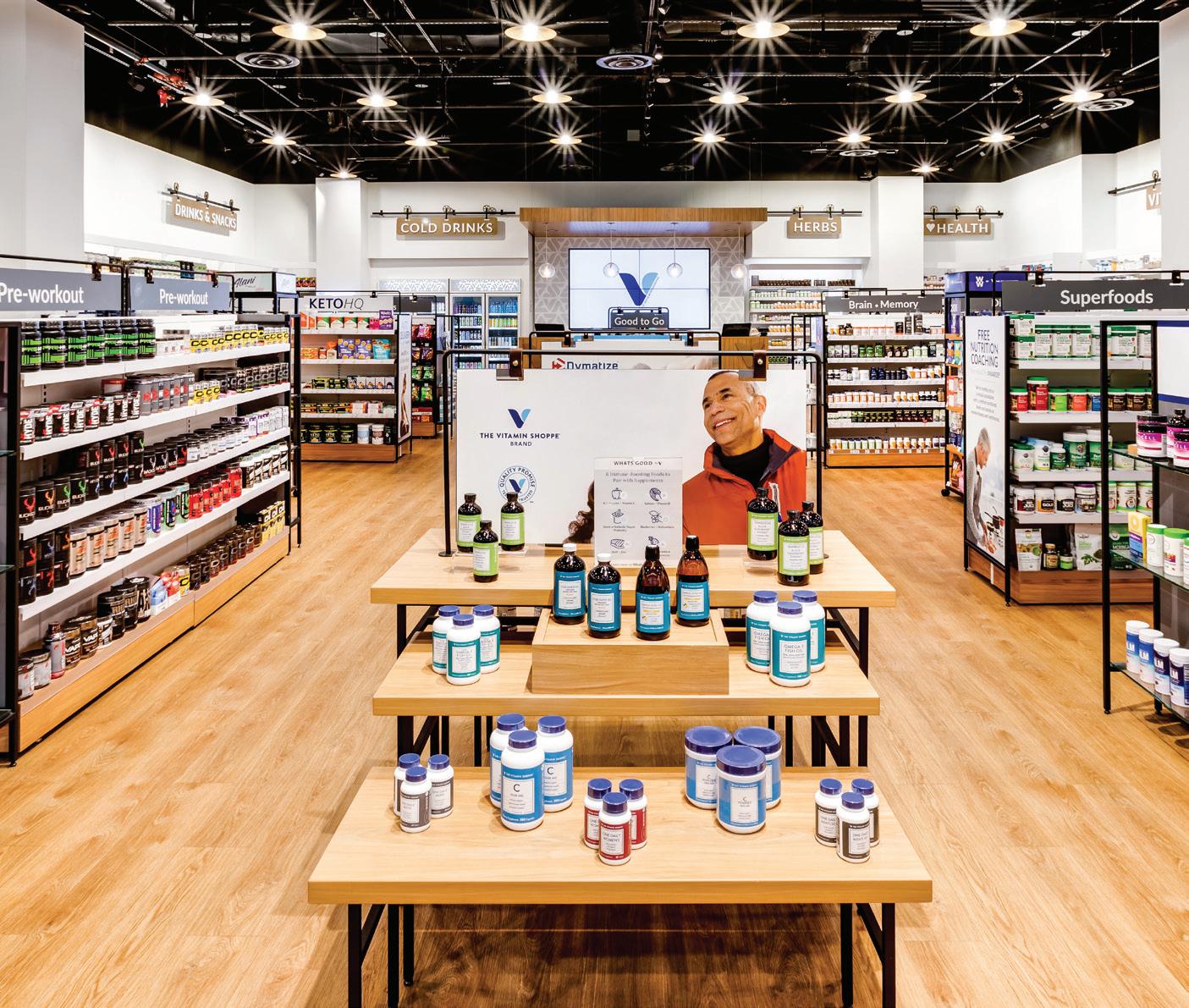














First job: Little Caesars at 15. I interviewed with Burger Chef and Little Caesars when I decided to get a job. Little Caesars offered me five cents more per hour. My fate was sealed!
Formative influences/events: I worked for corporate Little Caesars for seven or eight years before becoming a franchise owner. My two mentors at corporate Little Caesars were founder Mike Ilitch and Bob Massey, VP of franchise sales. Both men were a wealth of knowledge. They loved to share, encourage, and watch young employees grow. I wouldn’t be where I am today without both of them.
Biggest current challenge: Managing cash flow in today’s envi ronment.
Next big goal: Develop 10 new Little Caesars locations in North Carolina and develop four new Dog Haus locations in West Virginia.
Best business decision: Pulling the plug to hire experienced upperlevel team members. I’ve always promoted from within, but realized that was slowing down my ability to grow and accomplish the bucket list of dreams I’ve accumulated.
Hardest lesson learned: Wow, that’s easy. It’s choosing your part ners carefully. I put a lot of weight on character, passion, integrity, work ethic, morals, and respectability these days.
Work week: Before Covid-19, I took a lot of long weekends for travel. Now I miss travel. I try to keep a basic work week. Technology has helped to keep the plates spinning for me wherever I am.
Exercise/workout: I’m the so-so girl with exercise, mindful but not consistent like I want to be.
Best advice you ever got: Do not let availability distort your better judgment. In other words, trust your instincts.
What’s your passion in business? I’ve always dreamed of having a very large empire with a lot of different or diverse divisions. Where I’m at today isn’t that dream, so I need to say, I’m not finished quite yet.
How do you balance life and work? When you love what you do it’s not work, it’s more like responsibilities. Balancing responsibilities is time management. I’m probably a B-student at time management. I tend to run out of day before my to-do list gets done.
Guilty pleasure: Shopping, shopping, shopping, of course!
Favorite book: The Bible. My husband, Ross, is a Bible scholar and a fabulous teacher.
What do most people not know about you? That although I fin ished cosmetology school while in high school, I’ve never been to college. It was always on my list, but I was always so dedicated to my career at Little Caesars that it never happened.
Pet peeve: People who take advantage of others. What did you want to be when you grew up? A lawyer, and I was determined to condense the eight years of education into six. I don’t regret that I didn’t get to test that theory.
Last vacation: June 2022, a wonderful honeymoon that started with a coastal train from Los Angeles to Seattle then a flight to Vancouver to board a cruise through Alaska’s Inside Passage. The person I’d most like to have lunch with: If I could have a real open conversation, I would like my lunch to be with two former
U.S. presidents from both sides of the aisle, to get a better idea of where we all share common ground.
Management method or style: Lead by example and leadership from the front.
Greatest challenge: To achieve my goals (bucket list) before I die. How do others describe you? A motivated dreamer/doer. One thing I’m looking to do better: Improve my communication skills. I’m a quiet listener too often.
How I give my team room to innovate and experiment: Give them the training for the position and history of the past. Past wins and losses can teach the best of us.
How close are you to operations? For the last 15 years, I spent most of my time with accountants, lawyers, bankers, and insurance agents. But my true love is in the restaurants with my team.
What are the two most important things you rely on from your franchisor? Open communication—even the bad stuff franchisees don’t want to hear—and strategic long-term planning with the “why.”
How is social media affecting your business? I wish I could answer this better. This is so new and is evolving so fast that I really feel uneducated about it... and I’m a good marketer.
How do you hire and fire? We coach people to hire for work ethic, hire for integrity, hire for personal morals. We can teach the nec essary skills.
Fastest way into my doghouse: Not doing what you say you will or any integrity issues.
How did Covid-19 affect your business? How have you responded? It had us all fighting to survive and maintain jobs. My ability to adjust rapidly at any moment has been perfected! What changes do you think will be permanent? I wish I knew, so I didn’t have to adjust rapidly!
Growth meter: How do you measure your growth? Are we better than we were a year ago?
Do you have brands in different segments? Why/why not? Yes, Little Caesars has price leadership, which is especially important in this economy. Dog Haus Biergarten is in the craft casual space. I also operate a large commercial and residential real estate business for diversity.
What are you doing to take care of your employees? Compassion when needed, bonus programs for the achievers, solid training for the underachievers, recognition programs, swag and cupcake parties, and any other fun or motivational ideas we can brain storm. We’re a team, and there isn’t an “I” in “team.” The team wins together or loses together.
How are you handling rising employee costs (payroll, minimum wage, healthcare, etc.)? Squeezing everywhere we can and bidding out all services looking for any rising cost pressure relief to have room for employee wage increases.
How do you reward/recognize top-performing employees? Bonus plans, individual and group awards, and most recently, special rally days. Always looking for new ways.





















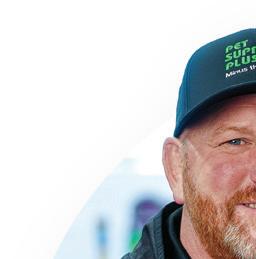

























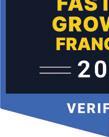
















We’re opening our
year. The brand is truly
and a smart investment.”
& Cole Weber
Supplies Plus
Owners, Father & Son
investment.
“
Mo Khalil has experienced an American Dream success story that almost wasn’t.
Khalil, who emigrated from Egypt to the U.S. when he was 11, says learning English was challenging. So was assimilating to his new life in the Bronx in New York City. At one point in his teens he even found himself homeless.
Today, Khalil is executive director of Khalil Ventures, a company he founded in 2011 that now operates 39 Mathnasium locations in Florida, Kentucky, Texas, and New Jersey.

“I always knew growing up that I wanted to have my own business,” says the 44-year-old. He got his first taste of business managing Pizza Hut and Rite Aid pharmacy locations while attending college. After college he worked for Ricoh and Canon Business Solutions in sales and management roles, adding skills to his business management toolbox. He entered the franchising world by operating a number of Wireless Zone stores before signing on with Mathnasium.
Khalil says he always loved math and teaching, which helped make the franchise a perfect fit. “My wife and I wanted to help chil dren, and Mathnasium gives us that chance,” he says. The brand’s established curriculum and teaching methods, combined with its proven business model, have helped Khalil build a business with more than $19 million in annual revenue.
Khalil and his organization have been recognized as Mathnasium’s Top Performing Franchisee 8 years in a row. He’s also been recognized by the brand for Best Turnaround of a Resale and Top Multi-Unit by AUV.
Khalil says he’s looking to expand to 65 centers in the next 5 years and would like to reach 80 locations in the next decade. He’s also decided he wants to own the real estate where his centers are located, with 25% as his current goal.
“To supplement the business, we’re striving to own the real estate side. Outside of that, we love what we do, it’s a satisfying business, and we’re making a real impact in communities and changing lives through math.”
First job: I was a store manager at Pizza Hut, which was a fran chisee-owned location.
Sales of the top performing 25% (or 70 units) of Hungry Howie’s Franchised Units that were open for the entire 52-week period from December 28, 2020 through December 26, 2021. “Franchised Units” means all Hungry Howie’s Units that were open and reporting sales to us for the entire fiscal year, and excludes units in the State of Florida, affiliated units, units which opened or closed during the entire fiscal year, legacy units which are not obligated to and do not report sales to us, and units that were closed for more than ten consecutive days during the entire fiscal year due to a force majeure event (e.g. COVID-19). The Franchised Units are in 20 states. These Fran chised Units have reasonably similar operations as those being offered for sale. See Item 19 of Hungry Howie’s 2022 Franchise Disclosure Document for additional information.

This information is not intended as an offer to sell, or the solicitation of an offer to buy, a franchise. It is for informational purposes only. Currently, the following states regulate the offer and sale of franchises: California, Hawaii, Illinois, Indiana, Maryland, Michigan, Minnesota, New York, North Dakota, Oregon, Rhode Island, South Dakota, Virginia, Washington, and Wisconsin.If you are a resident of one of these states, we will not
and until we have complied with applicable pre-sale registration and
in your jurisdiction.
you a
Formative influences/events: I emigrated from Egypt and moved to the Bronx when I was 11 years old. I struggled to learn English and assimilate in New York.
Key accomplishments: Being a father, husband, and graduating college. Being a family man is my top priority.
Biggest current challenge: Living as a good example to my chil dren and being a good father.
Next big goal: To expand to 50 math centers.
First turning point in your career: I learned my professional sales and marketing skills while working for Canon Business Solutions.
Best business decision: Choosing to invest in Mathnasium.
Hardest lesson learned: To not expand into too many markets without having a reliable cluster of locations in the area for ease of management. It’s challenging to manage one from afar versus establishing a cluster of centers as added support.
Work week: I break up my day by working from the office and home from 9 a.m. to 3 p.m., then spend time with the family and finish up work from 8 to 10 p.m.
Exercise/workout: Every day, five days a week.
Best advice you ever got: Think of your legacy early on and how you want people to remember you. I think of what people will think of me, which has helped me be a better father, husband, and businessman. My core values are much more focused, living with that mantra in mind.
What’s your passion in business? I enjoy the sales, marketing, and overall growth aspect of franchising. This involves location analysis, demographic analysis, and starting up locations.
How do you balance life and work? I try to split up the day. During the day it’s work, and family time is when the boys are home from school until they go to bed. I do make the common mistake of working from my phone a lot, which is something I am working on.
Guilty pleasure: Multitasking and working from my phone.
Favorite book: Remarkable! Maximizing Results Through Value Creation by Randy Ross and David Salyers.
Favorite movie: “Gladiator.”
What do most people not know about you? English is my second language. At one point in my late teens I was homeless.
Pet peeve: People who are unorganized and not passionate to suc ceed.
What did you want to be when you grew up? Businessperson. Last vacation: Dominican Republic.
Person I’d most like to have lunch with: Warren Buffett, selfmade billionaire. A humble leader who still takes time to help others achieve success.
Business philosophy: Find great people, train great people, and retain great people.
Management method or style: This has changed over the years. In the beginning I was very hands-on and did little to no delegation. Now I am more of a mentor who can delegate properly. By doing so, I empower my team to own different aspects of the business.
Greatest challenge: As in every industry, finding reliable people who are inspired to build a sustainable infrastructure for future growth.
How do others describe you? Intense.
One thing I’m looking to do better: Travel more for business. I don’t do it as much as I once did.
How I give my team room to innovate and experiment: I ask a lot of Socratic questions to provoke thoughtful conversation. It helps keep the ideas flowing and allows the team to make their own decisions. I share my opinion and ideas, but ultimately, they decide what is best. This creates ownership, responsibility, and accountability to their decisions.
How close are you to operations? Not as close anymore, but once I begin to travel again and visit centers, that will change. I focus on the growth of the company; my COO, Edwin Farner, owns the operational side.
What is the most important thing you rely on from your fran chisor? The education department, including the proprietary curriculum.
What I need from vendors: Reliability, customer support, and continued focus on efficiency.
Have you changed your marketing strategy in response to the economy? How? Not really, we’ve always been focused on creat ing value with our program, and what we offer communities will always be of value, even if the economy fluctuates. Families and students will always need math help, so we try not to panic when the economy is in question.
How is social media affecting your business? It’s becoming more involved, so we are trying to incorporate more day-to-day updates at every location. It is a huge challenge to encourage 39 centers to make sure they are posting and sharing constant updates with their local communities.
Mo Khalil I ASK A LOT OF SOCRATIC QUESTIONS TO PROVOKE THOUGHTFUL CONVERSATION. IT HELPS KEEP THE IDEAS FLOWING AND ALLOWS THE TEAM TO MAKE THEIR OWN DECISIONS. I SHARE MY OPINION AND IDEAS, BUT ULTIMATELY, THEY DECIDE WHAT IS BEST.

How do you hire and fire? We do group interviews and have can didates interviewed by three to four different people. While we provide plenty of support, assistance, and training to get people comfortable in their position, if they’re not taking responsibility for their performance and ownership, then we part ways. If someone doesn’t want to do well, they won’t do well, and we won’t do their job for them.
How do you train and retain? We have a training department. Lauren Love is our director of training. She’s been with us for 12 years and does an incredible job with our staff. She’s created a detailed and extensive training program to equip all of our hires. We also rely heavily on our eight professional area managers, who each have multi-unit management experience. They maintain the field training during center visits, mentoring, observations, and follow-ups.
How do you deal with problem employees? After we’ve had mul tiple discussions and feel we have exhausted our support resources, we reevaluate if the individual aligns with and reflects our core values. Our core values are centered on family, health, passion, respect, connection, and compassion. If they don’t fit or care about our core values, then we part ways.
Fastest way into my doghouse: People who do not accept respon sibility or choose to deflect onto others.
How did Covid-19 affect your business? It was a complete shock to our system, as we’re a mostly in-person concept that is built on our relationships with our students. When that was taken away, my first thought was that our entire business would be gone. Fortunately at the time, Mathnasium was in a trial process of releasing an online platform for virtual learning sessions. We quickly converted our entire student base to online in less than a week. It was a huge accomplishment that couldn’t have been done without our team. However, we did lose a significant amount of business because of the pandemic’s economic impact on many families who were faced with hardships.
How have you responded? We were nimble and reacted very quickly. We still maintain 25% of our student base online. Today, we’re well above our 2019 sales.
What changes do you think will be permanent? The reliance of our online capabilities will remain as part of our value offering. It is convenient for a subset of students. It’s not for everyone, but a lot of families rely on our online learning to support their ever-changing schedules.
Annual revenue: $19 million.
2022 goals: In 2021, we did $15 million. Our forecasted goal for this year will be to reach $19 million.
Growth meter: How do you measure your growth? We compare with the year before, the month before, and our rolling 12-month.
Vision meter: Where do you want to be in 5 years? 10 years? We’re looking to own 65 centers in 5 years. In 10, we could reach 80. Another goal is to own 25% of the real estate our locations are in. Do you have brands in different segments? Why/why not? No, we do not. I’m in a great industry whose future is very stable with steady growth. We’ve only scratched the surface in our industry.
Learning centers as a whole are a total of 10% of industry spend, so the growth opportunity is incredible.
How is the economy in your regions affecting you, your employ ees, your customers? Overall, it’s the rising costs of wages, rent, and supplies. In Florida, the majority of our centers will face the challenge of the minimum wage getting to $15 over the next cou ple of years. We’re trying to stay ahead of that. For our customers, it’s the rising cost of our service. It does price out or exclude some price-sensitive families, which is never what we want. We want to serve as many people as possible, so we do offer financial assistance for some of our families. We’re doing all that we can to serve as many students as we can.
Are you experiencing economic growth in your market? Yes, we’re concentrated in two of the fastest growing states: Florida and Texas.
How do changes in the economy affect the way you do business? It has not, as we insist on creating as much value for our families as possible. Our service is the best, and the value we provide families will always remain our top priority. We’ve rebounded completely from our 2019–2020 losses. That could be because we’re in two of the fastest-growing states, so we’re not having the same financial challenges as other states and areas.
How do you forecast for your business? It is a huge challenge to forecast for our business. We know and look at our business cycles and historical trends: back to school, holidays, end of year, and summertime. We use our historical data and measure based on where we are in the year to understand the seasonality of the business.
What are the best sources for capital expansion? We rely on our banking relationships.
Experience with private equity, local banks, national banks, other institutions? Why/why not? We have great relationships with local banks and use them for real estate expansion and acqui sitions for larger franchisees.
What are you doing to take care of your employees? We offer an extensive benefit package that includes unlimited PTO, salary bonuses, health benefits, and a 401(k) plan. We are currently creat ing an equity program where employees can invest in the company and the future.
How are you handling rising employee costs (payroll, minimum wage, healthcare, etc.)? We’ve had to raise our prices, but we also continue to invest in our people to attract and retain the great ones with benefits, bonuses, and even future investment opportunities.
What laws and regulations are affecting your business and how are you dealing with them? The main challenge is the rising min imum wage.
How do you reward/recognize top-performing employees? With annual awards that we use to recognize our top performers, and with financial bonuses, constant praise, and feedback.
What kind of exit strategy do you have in place? Right now, there is no exit strategy in sight. But should the time arise, my only real option with the size of our business would be private equity.
Join the growing franchise that delivers a winning conversion strategy, great Franchise Owner support and fresh seafood boils with our bold, signature Asian-Cajun flavors people love.


*This figure represents the net sales achieved for calendar year 2021 at five (5) affiliate owned restaurants and eight (8) franchised restaurants. **This figure represents the average EBITDA achieved for calendar year 2021 as a percentage of consolidated net sales at the same five (5) affiliate owned restaurants and eight (8) franchised restaurants. *** This figure represents the Median Initial Investment to open the same five (5) affiliate owned restaurants and six (6) of the same eight (8) franchised restaurants above, all of which were opened in Second Generation Sites. Second Generation Sites are restaurant locations where the operator utilized a premises that was previously operated as a restaurant and therefore requires less initial investment to open and operate. Most Angry Crab Shacks are opened in Second Generation Sites. Each of the included restaurants were open for all of calendar year 2021. This information appears in Item 19 of our Franchise Disclosure Document (FDD). You should review our FDD for details about these results. Your results may differ. There is no assurance that you will do as well. ©2022 Angry Crab Franchise, LLC.
85210.
reserved.
Crab
Opportunity, 2345 S.


Mike James has been a franchisee for only 3 years. In that time he has built a portfolio of 87 Sonic and 40 Little Caesars locations in Idaho, Washington, Texas, Illinois, and Louisiana, ringing up annual revenue of $200 million. While that’s already a sizable operation, he has bigger plans.
“We plan to eclipse 500 restaurants by the end of 2023,” says the 37-year-old. One more thing: James is not just juggling a lot in his business life. He and his wife, McCall, are set to welcome a baby girl in November.
James says he can still recall his first taste of Sonic when he was playing football at the University of Utah. He and his teammates would go there for breakfast on game days. After graduating, James found himself working as a commercial real estate broker where he got to know some Sonic franchisees and corporate contacts through their development projects. It took him about 5 years of witnessing the franchisee lifestyle and connecting with their employees to make him want to try franchising for himself.
His first franchise buy was a group of 21 Little Caesars. From there, it was a quick trip to 40. In the spring of 2021, James pur chased his first Sonic and has had his foot on the gas ever since. So far, he’s built his portfolio exclusively through acquisitions.
James says his company is planning to build some new Sonic locations in the coming months, along with continued acquisitions, primarily in the rural markets that have been his sweet spot.
Like most successful multi-brand operators, James is passionate about the people who work for him. “I have hundreds of examples of people who have come from nothing and built a real career within our company,” he says. “I love being in the field and feeling the passion of our team.”
Even with 127 franchise locations, James remains an involved franchisee. That means 10 to 12 hours of weekly operational calls and visiting as many as 30 restaurants every month. “We’re not just buying units, we’re investing in them, and we want them and everyone in them to be successful.”
First job: Commercial real estate broker. Formative influences/events: Playing football in high school and college taught me the value of discipline and hard work. I applied those principles to commercial real estate brokerage when
I began my career in 2010. That was during the heart of the Great Recession, and I worked 100-plus-hour weeks for the next 5 years. The investment in time accelerated successes and ultimately led me to launch my first company, now called Ascension.
Key accomplishments: Acquiring 127 restaurants in my first 3 years in the franchise business. Playing a large role in the Alzheimer’s Association as a board member and active participant.
Biggest current challenge: Dealing with commodity inflation, the low labor participation rate, and the revolving door of government policies and regulations.
Next big goal: We plan to eclipse 500 restaurants by year-end 2023, maintaining our position in the top 10% of operations, as measured by each of the brands we operate, while building a culture around internal training and promotion.
The first turning point in your career: Starting my first company.
Best business decision: Partnering with the right people.
Hardest lesson learned: When my partner, Reed Melillo, and I decided to pull the trigger on our first restaurant acquisition, we partnered with Ari Miller of Camden Holdings, who was a real estate client of mine at the time. We acquired 21 Little Caesars in Michigan and quickly realized we had no idea what we were doing. I flew to Michigan every month for 2 years, trying to sort out how to manage a restaurant business, and finally realized that we had hired the wrong team at the outset. We needed to get the right people on the bus immediately, so we quickly made the necessary hires and the business has performed tremendously ever since. I’m thankful for having such amazing partners. I would not be where I am today without them.
Work week: I stopped setting an alarm a couple of years ago. I get to bed by 10 p.m. and am up around 5 or 6 a.m. to start my day with meditation, sun, and working out. I average around 60 hours of work per week and track my time. What I don’t do is drink alcohol. After a bender one weekend, I decided to take 30 days off drinking alcohol. I had never felt better and decided to challenge myself to 1 year. I’m now 2 years into sobriety and I have never been happier. The revenue of the business grew from $40 million to over $200 million in those 2 years, by the way. I would highly recommend trying sobriety.
Exercise/workout: Five to 6 days a week, weights, cardio, dog walking.
Best advice you ever got: To read the Wall Street Journal for 45 minutes every day. I was a terrible student when a college mentor suggested this. I adopted the habit in my junior year of college and didn’t understand 90% of what I was reading, but by the time I graduated I understood at least half of the content. Now I’ve considered writing articles.
What’s your passion in business? The people I work with are at the forefront of my priorities in business, so it’s rewarding to see a storelevel employee, who may have come from a low-income household, turn their job into a career by rising through the ranks. Many fastfood franchisees are money-making machines that churn through people the way they churn through beef patties. We do the oppo site: Take care of our people and create greatness together.
Guilty pleasure: Panda Express, sour candy, and room service.
Favorite book: Grinding it Out: The Making of McDonald’s by Ray Kroc.
Favorite movie: “The Founder.”
What do most people not know about you? My entire family is English and I am the first-born American.
Pet peeve: People not seeing the big picture. What did you want to be when you grew up? An NFL superstar. Last vacation: Charleston, South Carolina.
The person I’d most like to have lunch with: Raising Cane’s founder Todd Graves.
Business philosophy: People, People, People. If you don’t have the right people, you don’t have a business. Get the right people and you’re halfway there.
Management method or style: I’m a driver who moves things forward aggressively. I’m also empowering, patient, and willing to do whatever is necessary to achieve success.
How do others describe you? Positive and full of energy.
One thing I’m looking to do better: Be willing to take a step back to take two steps forward. I’m a driver, and I want to move forward and win now, but there are times when I could benefit from pausing a beat and being more tactful.
How I give my team room to innovate and experiment: I have an incredible team that has a ton of autonomy. Innovation is in their blood, and we have created a culture in which the best idea always prevails. As my grandpa always said about golf, “It’s not how, it’s how many.”
How close are you to operations? I’m highly involved. We have 10 to 12 hours of weekly operational calls, and I typically visit 20 to 30 restaurants every month. A lot of owners shop the store, say “Hi”
I DON’T VISIT RESTAURANTS TO CHECK THEM OFF THE LIST. I VISIT RESTAURANTS TO SPEND TIME WITH OUR TEAM, TALK ABOUT WHAT’S GOING WELL AND WHAT’S NOT, AND ULTIMATELY THANK THEM FOR ALL THEIR HARD WORK.
to the team, and then leave. Our Sonic Brand President Jacques Grondin calls that “kissing the baby.” I don’t visit restaurants to check them off the list. I visit restaurants to spend time with our team, talk about what’s going well and what’s not, and ultimately thank them for all their hard work.
What are the two most important things you rely on from your franchisor? We need real and reliable guidance. From products to marketing campaigns to real estate advice and more, we need to know that our franchisor has our best interests in mind. Inspire Brands has been there to guide us as needed for our Sonic locations. We also want to know that our franchisors are just as invested in our restaurants as we are, and that we can trust the decisions being made on our behalf from the corporate level. We put a lot of time, money, and resources into our locations to help ensure their success, so it’s essential that a franchisor recognizes that investment and is willing to help deliver a return.
Have you changed your marketing strategy in response to the economy? How? We are starting to roll out more value-based menu items to support our customers during an unprecedented inflationary period.
Fastest way into my doghouse: Not doing what you said you would do.
How did Covid-19 affect your business? The government cir culated too much money into the economy, and it has made it incredibly difficult to manage the business. At first, it led to a short age of workers, and now it has led to inflation that is hurting our customers and affecting the cost of our products.
How have you responded? We have implemented a value-driven menu approach while doubling down on efforts to support our existing team and reduce turnover.
What changes do you think will be permanent? The digital com ponent of our business grew tremendously during the pandemic, and we are only seeing that continue to grow.
Annual revenue: $200 million.
2022 goals: Top 10% operations in all the brands we operate, bot tom quartile in turnover when compared with the QSR industry, and more than 250 units by year’s end.
Growth meter: How do you measure your growth? Margins are currently off by 10% to 25% because of labor challenges and com modity inflation. We look at a normalized profitability percentage and create unit-count growth goals based on those assumptions.
Vision meter: Where do you want to be in 5 years? 10 years? We will surpass 600 restaurants in the next 5 years and most likely reach 1,000 in the next 10 years.
Do you have brands in different segments? Why/why not? All brands have their ups and downs. Diversification is key to longterm success. Little Caesars and Sonic both have a strong track record of performing in all different types of economies.
How is the economy in your region affecting you, your employ ees, and your customers? Inflation is killing the customer, particularly around housing, food, and gas prices. Our typical customers are hardworking Americans, and inflation has taken away most of their discretionary dollars.
Are you experiencing economic growth in your market? The bulk of our units are in Louisiana and Texas. Both are tremendous states in which to operate businesses, and both support growth by main taining low taxes and providing a business-friendly environment.
How do you forecast for your business? We have anticipated com modity prices coming down meaningfully by the fourth quarter and drastically in the first or second quarter of 2023. Although I expect this will coincide with a minor recession, I believe that it will be a significant net positive for the QSR industry.
What are you doing to take care of your employees? I’ve described the major points above, but the essential aspects are our focus on training and creating a culture of internal promotions. We provide significant upward movement opportunities for our people.
How are you handling rising employee costs (payroll, minimum wage, healthcare, etc.)? We make sure that employee compen sation properly aligns with that restaurant’s profitability so that team members hold an appropriate stake in the business. If our team is aligned to drive operational and financial results, then they will benefit regardless of the inflationary pressures on the aforementioned items.
How do you reward/recognize top-performing employees? We organize and host an annual trip for our top performers, as well as provide numerous other awards on a weekly, monthly, quarterly, and annual basis. We go above and beyond for our team.
What kind of exit strategy do you have in place? We are looking to build a great company that we will never sell.
ALL BRANDS HAVE THEIR UPS AND DOWNS. DIVERSIFICATION IS KEY TO LONG-TERM SUCCESS. LITTLE CAESARS AND SONIC BOTH HAVE A STRONG TRACK RECORD OF PERFORMING IN ALL DIFFERENT TYPES OF ECONOMIES.
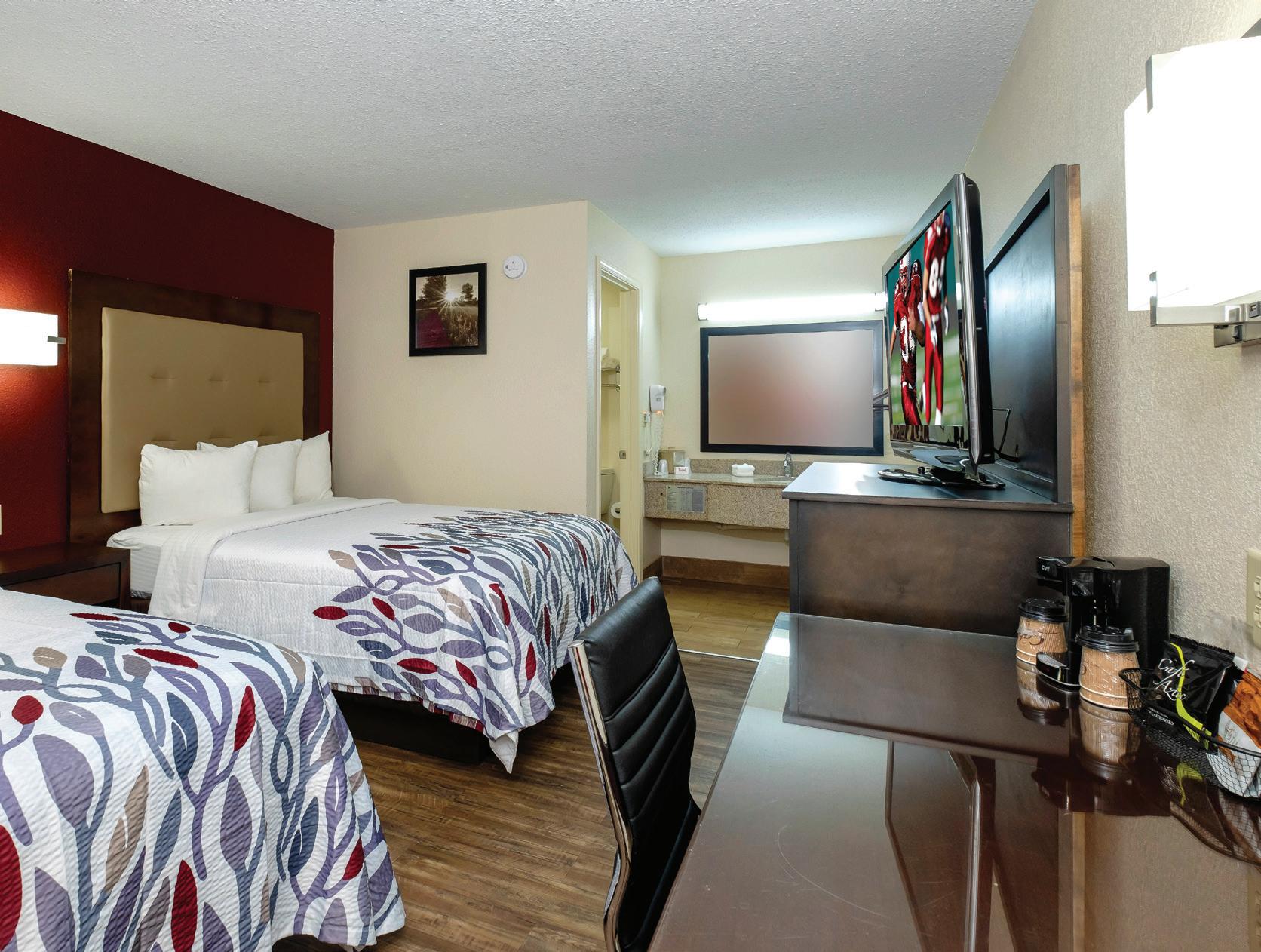



















Franchising just made sense for entrepreneur Justin Sharbutt. “The playbook maps out the steps, you follow the guidelines, you achieve your goals,” says the 38-year-old. That’s just what he’s done for more than 15 years as an entrepreneur and with several franchise brands, including BurgerFi, Dunkin’/Baskin-Robbins, and Tide Cleaners.
His franchise journey began when he opened his first Dunkin’ location in 2014. A year later, he signed on with BurgerFi. He was growing his business in the restaurant space when he and partner Brandt Stravlo ran across a magazine ad for Tide Cleaners.
“We called that day, and by the next week we were at a discovery day,” he says. They both liked the brand’s name recognition and reputation and opened their first location in 2015. They now have 54 Tide Cleaners locations throughout Texas and Colorado, with 12 more in the pipeline. His goal for his company is to reach 100 locations in 10 years.
Overseeing dozens of locations with multiple brands is a chal lenge for any operator. Sharbutt and Stravlo employ a strategy to divide and conquer. Stravlo, the company’s COO, spends most of his time in the stores making sure things are running smoothly. Sharbutt spends his checking out real estate, reviewing contracts, and searching for new acquisition opportunities.
“You start with one location, but as they say, ‘If you want a job, buy one store; if you want a career, buy multiple,’” he says. “You can get consumed with daily operations with just one location, but if you have multiple locations and the right team, it’s easier to manage.”
In addition to being a successful multi-brand franchisee, Sharbutt also has served on his brands’ franchise advisory coun cils as well as in advisory roles with local charities. He also has a family—five kids with another on the way—and counts being a father as one of his greatest accomplishments.

By the end of this year, Sharbutt’s empire will have close to 70 units open and more than 600 employees across Texas and Colorado. As he says, “If your dream doesn’t scare you, it’s not big enough.”
First job: My two best friends and I started a leaf raking business
we were 10 years old. We would go around the neighborhood
peoples’ yards. We named the business The Tree Amigos.
“If your dream doesn’t scare you, it’s not big enough.”
Formative influences/events: When I was younger, I was told that I would be an entrepreneur when I grew up. I heard this from both teachers and my father! But the one moment that sticks out the most was when I dropped out of college my first semester and moved to Colorado to become a ski bum. I quickly realized that I hated living paycheck to paycheck, so I decided to go back to school and get my degree. It was then that I knew I wanted to work for myself.
First turning point in your career: There have been so many turn ing points that come to mind that I’d be hard-pressed not to think of something daily that has had an effect. However, I will say that the moment we signed with Tide Cleaners, I truly felt a shift. The brand recognition, corporate support, and immediate success of our first location left us on a mission to open as many as possible.
Best business decision: Hire key people early and trust their skills. Find a mentor and never stop your quest to learn.
Hardest lesson learned: That it’s okay to close or sell stores that aren’t profitable. As a multi-unit franchise owner, I’ve learned it isn’t a failure to close one; it just allows us to focus and grow in the profitable areas.
Work week: Typically, I like to get to the office around 7 or 7:30 and stay until 4 or 5. Now with technology, you can work all hours of the day. This isn’t ideal with a family, but I can still answer emails while sitting in the stands at our kids’ games.
Exercise/workout: My wife is an instructor at CycleBar, so I try to go when I can and get a killer workout. I like playing basketball with my kids, walking my dog, and working out with The Mirror.
Best advice you ever got: “You don’t lose money when you’re mak ing a profit.”
What’s your passion in business? I love starting new businesses or producing wild ideas. The acquisition side of business is extremely fun for me, too! One sentence that plays on repeat in my mind is, “If your dream doesn’t scare you, it’s not big enough.”
How do you balance life and work? My wife and I have to be very diligent about this. We sit down on Sundays and go over what we have coming up for the week regarding ourselves and our children. As I mentioned earlier, technology has come so far in allowing work to be done outside the office. A bonus is my entire family is very entrepreneurial and always curious about what I’m doing, so we talk about different business topics as a family.
Guilty pleasure: Vanilla Bean Coolatta from Dunkin’ and/or but ter pecan ice cream from Baskin (but don’t tell my wife!).
Favorite book: The Richest Man in Babylon by George S. Clason. Favorite movie: It’s way too hard for me to just pick one, so I’ll give my top three: “Braveheart,” “Lone Survivor,” and (of course) “Dumb and Dumber.”
What do most people not know about you? I love to cook. I almost went to culinary school.
Key accomplishments: I’m torn when it comes to my key accom plishments. Owning a business while going to college is a big achievement for me, but so is opening our first Dunkin’ location in 2014. These two accomplishments opened my eyes and gave me true insight with regard to real estate, construction, and training staff. Not to mention balancing that with my most important job of spending time with my family and awaiting our new baby!
Biggest current challenge: Inflation is the biggest challenge for us right now. The rising cost of goods and wages has created challenges for us. I am certain, though, that with my team and corporate support, we can overcome these obstacles. Next big goal: Our next big goal is to cross the 100-store count and get to $25 million in EBITDA. I have no doubt that we’ll achieve this through acquisitions and organic growth.
Pet peeve: Liars and lazy people. What did you want to be when you grew up? After I quickly real ized that I had zero chance of playing in the NBA—I’m 5’8’’—I wanted to work in the front office of an NBA or NFL team. I love sports and business, so I thought that was going to be the best of both worlds!
Last vacation: We have a place in Telluride, Colorado, that we enjoy going to as a family. I’m here now.
The person I’d most like to have lunch with: Michael Jordan. MANAGEMENT
Business philosophy: Work hard, play hard.
Management method or style: Participative leadership. I thrive on getting input from my team first. However, a close second is to come up with a team challenge and then we all come up with a plan of attack.
Greatest challenge: Employees and inflation.
OUR MANAGEMENT, ALONG WITH THE CORPORATE TEAM, CREATES A GREAT HIRING PROCESS. ONCE THAT’S DONE, IT’S UP TO MY TEAM TO ABIDE BY AND LIVE UP TO OUR MISSION STATEMENT AND CREATE A CULTURE THAT ALLOWS EMPLOYEES TO KNOW THAT THERE’S ALWAYS ROOM FOR GROWTH.
How do others describe you? Loyal and fair.
One thing I am looking to do better: Follow-through. I’m good at coming up with new ideas or plans, but rarely follow through with them.
How I give my team room to innovate and experiment: I let them have a voice. We have a weekly meeting on Mondays. Before we meet we’ll ask questions, with the expectation that everyone will bring a response to the table. But we also encourage the team to brainstorm and bring ideas. Our Monday meetings can range from favorite quotes, to describing the person who most inspires you, to management and procedure ideas. It’s one of the things I look forward to the most each week.
How close are you to operations? I’m closer on the dry cleaning operations side than the restaurants, but my partner is the real operations guy. He knows his stuff inside and out of any industry we’re in. He still puts himself on the schedules and loves to get into the trenches.
What are the two most important things you rely on from your franchisor? Marketing and innovation.
What I need from vendors: Vendors could help with more main tenance support and more supplies on hand.
Have you changed your marketing strategy in response to the economy? How? Yes, for the restaurants, it’s more delivery and pickup-focused. For dry cleaning, we focused on how casual dress became during the pandemic, and more on wash-and-fold. Now, we’re focusing on people back in the office.
How is social media affecting your business? Social media is an amazing resource. It allows us to show people all we truly have to offer, as well as being a platform for our guests to comment, tag, and post about their great experiences.
How do you hire and fire? When we hire, we hire based on our values and theirs. An example of a question we ask would be, “Are they a good fit with our culture?” When we’re evaluating employ ees, we rate them red, yellow, or green. Reds are a no, yellow has a chance to turn to green, but they are on notice and have a time period to change.
How do you train and retain? It depends on which franchise. Ultimately, it’s up to the manager we’ve put in place at that specific location. Our management, along with the corporate team, creates a great hiring process. Once that’s done, it’s up to my team to abide by and live up to our mission statement and create a culture that allows employees to know that there’s always room for growth. How do you deal with problem employees? My partner and I are quick to decide if it’s going to work or not and we like to get to the bottom of an issue. We want the right people in the right seats. Fastest way into my doghouse: Lies or laziness.
How did Covid-19 affect your business? For dry cleaning, it went down 50% to 60% overnight. People weren’t going to the office or to events where they needed to dress up. Food went to 100% pickup or delivery.
What changes do you think will be permanent? I think delivery in all businesses is here to stay.
2022 goals: To be above 2019 numbers in all current stores. Most are there now.
Growth meter: How do you measure your growth? Store count, revenue, labor, and EBITDA are some of the measurable ways we hold ourselves accountable. These metrics are our “Pulse Meter.”
Do you have brands in different segments? Why/why not? Yes, we’re in a couple of different segments (clothing care and food) and always looking for more. I think from the past couple of years we found out food is tough and there are so many brands now, so we are looking outside of food and fitness.
Are you experiencing economic growth in your market? Big time in Texas!
How do changes in the economy affect the way you do business? There’s only so much you can do to combat changes in the economy. We stand by our brands and what we have to offer, and we have already seen how resilient our country and people can be.
How do you forecast for your business? We like to set multiple factors for our business when we forecast. For example, we take into consideration inflation, interest rates, and the health of the economy. Pre-Covid, it was easier to forecast. In 2022, it’s all about getting back to or better than 2019—which we are on track to do! What are the best sources for capital expansion? This is where being in and growing up in a great city like Lubbock, Texas, pays off. Not only is it the best place to live and raise a family, but the local connections with businesses and banks are always the best for us. We have built the best relationships with our bankers.
Experience with private equity, local banks, national banks, and other institutions? Why/why not? We have had experience with both private equity and local/regional banks. These are both really good routes to grow and expand fast. The local banks, in my opinion, are the easiest to work with.
What are you doing to take care of your employees? At the end of the day, as important as our P&Ls are, our employees are at the forefront of our minds on a daily basis. Just as every guest, customer, and region is different, so are our employees. We strive daily to fig ure out how to create the best work environment for everyone—and to create a culture that they want to attach themselves to.
How are you handling rising employee costs (payroll, minimum wage, healthcare, etc.)? Raising our prices is one way, but we’re always trying to get creative on benefits for our people.
What laws and regulations are affecting your business? Minimum wage, the Affordable Care Act, along with the joint employer regulations around buildings and build-outs across dif ferent counties and states.
What kind of exit strategy do you have in place? My business partner and I think about this a lot. We are growing rapidly and want to have a large company, so we don’t know if our strategy is to sell to private equity or hold on to an asset with cash flow and pass it down to our kids. Fun to think about both!


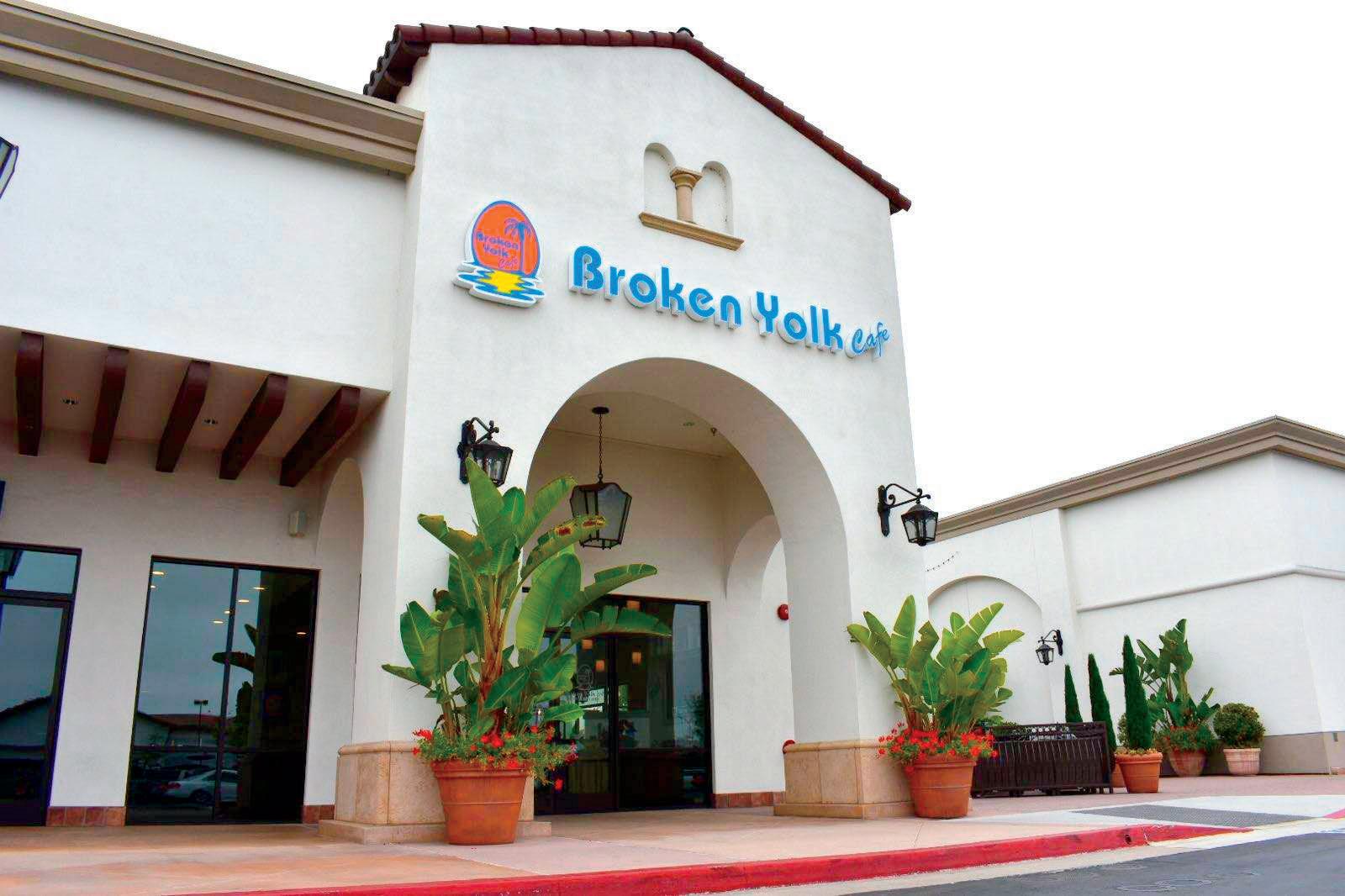
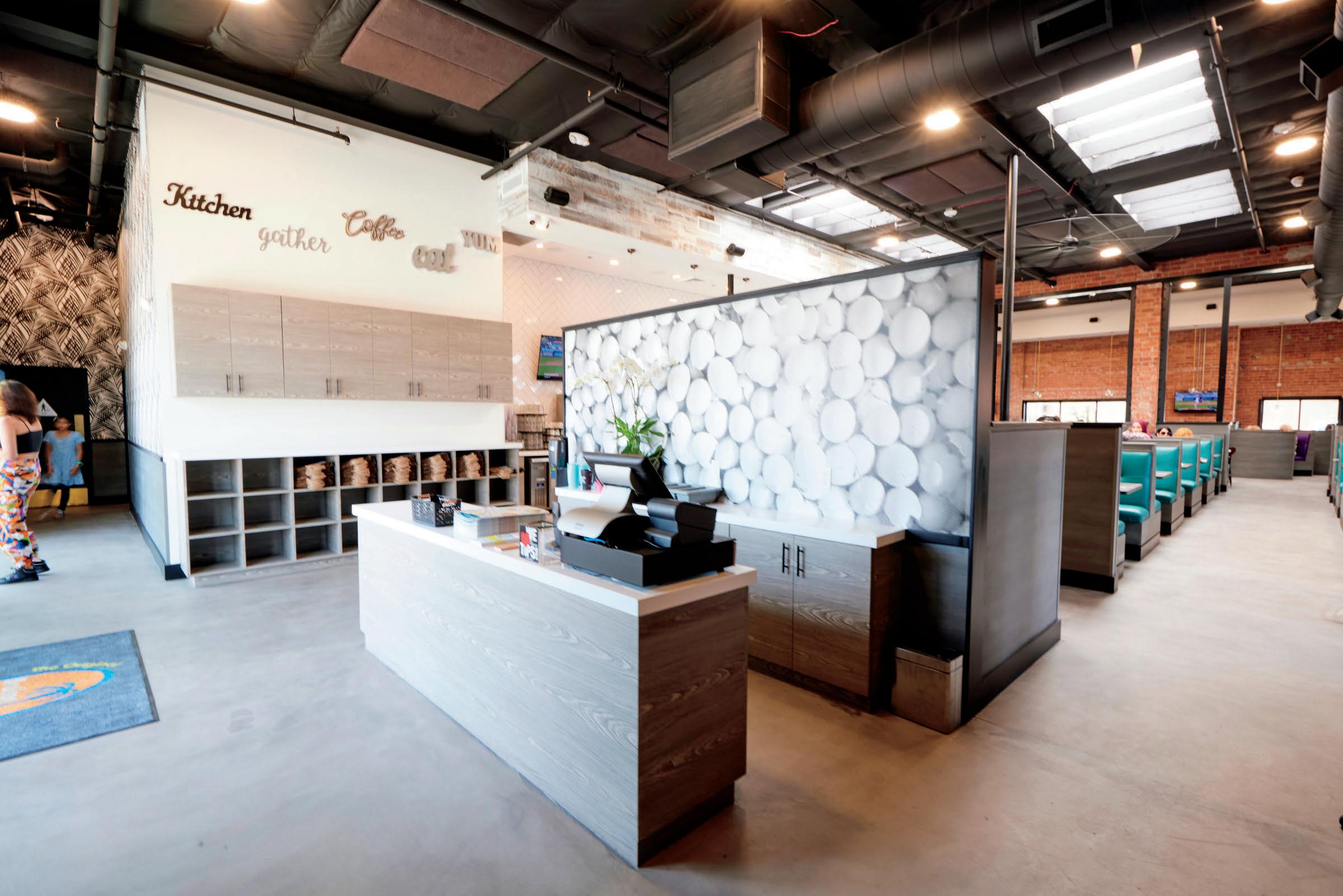

Since we last visited with Dave Gronewoller in 2014, he’s been busy adding more Golden Corral locations, has formed two new businesses, and has had the privilege of opening the first of Golden Corral’s new prototypes. Throughout, the North Carolina-based operator is still focused on developing his people and serving his customers in the Carolinas and Florida.
Gronewoller unveiled Golden Corral’s first new restaurant proto type, the Gateway, in December 2018. The design’s contemporary exterior complements an enlarged dining area that features wood tones, a stone fireplace, and oversized windows. “It’s meant to attract a whole new generation of guests,” he says.
A year later, Gronewoller opened another Gateway prototype in the Miami market before forming GRO Restaurant Group with his son, Brendyn, who serves as president and CEO. “We purchased an additional six Golden Corrals (now seven) with Brendyn,” he says. “He brings a fresh new perspective to the business, and it’s great working with him.”
This past March, Gronewoller formed GRO-FS with sons Brendyn and Nathan, Jon Fritchey, and Roger Schmidt. The group’s first purchase was a Golden Corral in Fayetteville, Arkansas. Gronewoller, 68, says the business itself won’t have an exit strategy for at least another generation. “We are in this for the long term. As far as my personal exit strategy, as soon as Brendyn and our leadership team are comfortable, I’ll exit!”
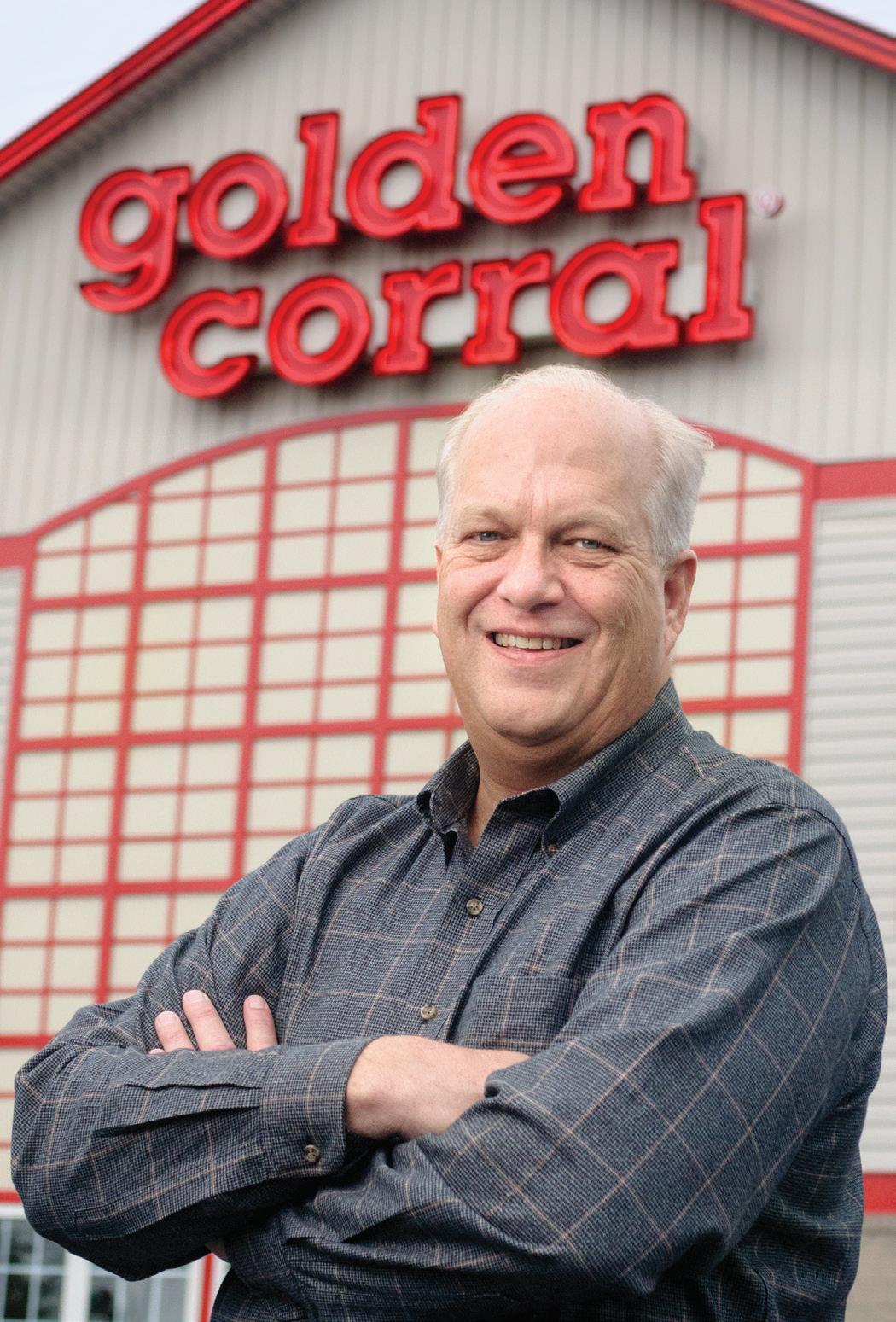
First job: My very first job was for a rancher in northern Colorado, digging and setting miles of fence posts. My first job in the restau rant industry was in Phoenix as a dishwasher.
Formative influences/events: Working on ranches in Colorado, and my uncle’s farm in northwest Kansas during the summers was very rewarding. My uncle was the smartest, most humble person I knew, and he taught me how to work smarter, not harder. Sports were also a great influence in my life. They taught me how to work as a team and with a team to win, while everyone plays a part. Taking a job as a dishwasher in a 24-hour restaurant after drop ping out of college showed me that every position is important and deserves respect. Each role serves a purpose for the greater good, adding value to one’s family, one’s self, and the business. When I leave work, or any other task, I feel the best when I did every thing I could to make a positive difference—for my family, for our employees, and the others our business relies on. It is just the best.


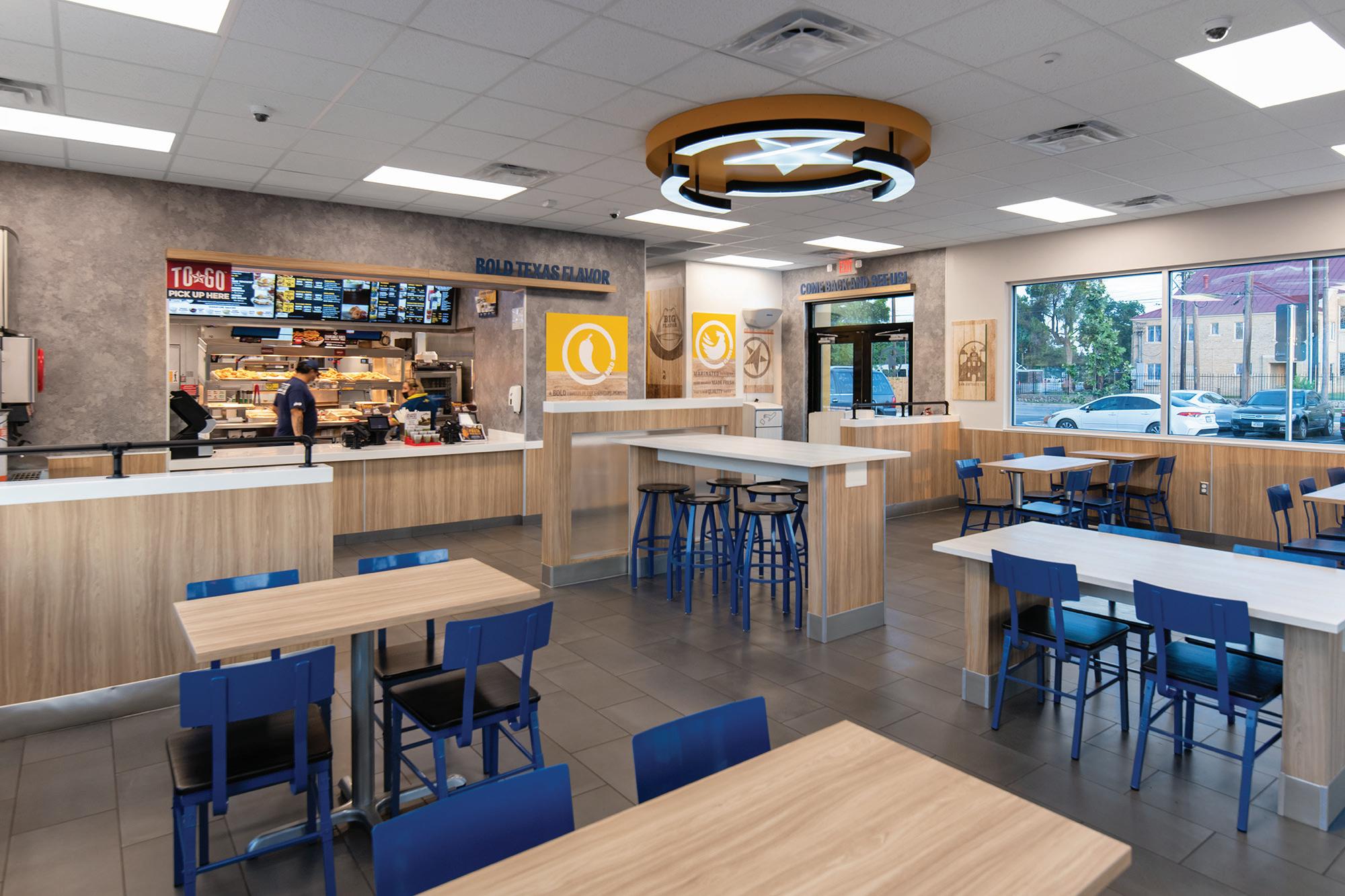

Key accomplishments: My family. I have been blessed and am extremely proud of each of them (including all four of my daugh ters-in-law and my son-in-law). Growing a successful business surrounded by the most incredible, talented, and committed indi viduals. They are just great people! Purchasing an additional six Golden Corrals (now seven) with my son, Brendyn, the CEO of the entity. Selected as Restaurateur of the Year by my peers in the state of North Carolina. Serving on the Board of Directors of the North Carolina Restaurant & Lodging Association for 20+ years (I think), elected Chairman in 2006. Being a founding trustee with the NCRLA Education Foundation supporting educational opportunities for the children of North Carolina hospitality indus try employees. The countless Golden Corral awards our people have earned, along with being the first to receive Golden Corral’s Caring Culture Award. Elected and serving more than 20 years on Golden Corral’s Franchise Advisory Council and selected as chairman for 5 consecutive years.
Biggest current challenge: Making sure our team is prepared to compete in the industry, with all of the pandemic-related issues we’ve faced. Because of our strong team, we have done extremely well pivoting through the challenges.
Next big goal: Find solid opportunities for our long-term team members that will enhance them, their families, and our businesses.
The first turning point in your career: When I found out my wife was pregnant for the first time. I knew then that it was time for me to get serious. I was about to have a family and a legacy to protect and provide for.
Best business decision: Choosing to become a Golden Corral fran chisee. We ventured into other businesses/franchises and divested them within 2 to 3 years. In my opinion, other concepts didn’t have what it took to support my needs and wants as a business owner.
Hardest lesson learned: Trusting someone I do not know well. I had worked a number of years with Golden Corral before they franchised. No matter the situation, their word was worth more than the wording of any document. It was something I relied on. There were several hard and expensive lessons learned when I left and became a franchisee. Golden Corral understands that and provides avenues to protect new franchisees from those same types of mistakes.
Work week: I routinely get up at 5 a.m. Coffee, check email, cal endar, reports, and plan the day. I’m in the office by 7 a.m. to make calls and attend meetings, then try to get out to the restaurants. Because weekends are the busiest days in our restaurants, I expect our management team to be there. I am no exception, and I work most weekends.
Best advice you ever got: Don’t try to fit a square peg into a round hole.
What is your passion in business? Knowing that I am making a positive difference in the lives of our employees, their families, and our guests every day.
How do you balance life and work? I don’t believe I do. I’m deeply passionate about both and give them all I have.
Guilty pleasure: Right now, my grandchildren. I enjoy spending all of my time with them.
Favorite book: Morning on Horseback by David McCullough, a biography of Theodore Roosevelt’s early life. Others I found inter esting were 1491 and The Ranch
Favorite movie: A new series, “1883.” My great-grandparents were
all settlers/pioneers, and growing up I heard a lot of stories. This series was very accurate in many ways, in line with those stories.
What do most people not know about you? I dropped out of col lege in my second year, packed up everything I owned, moved to Phoenix, and found a job as a restaurant dishwasher. I learned a lot about myself and the business, and loved the job and the people.
Pet peeve: Not doing the right thing. What did you want to be when you grew up? Forest ranger/profes sional hunter for the Forest Service, or join the Ski Patrol.
Last vacation: Hunting trip to Oregon.
The person I would most like to have lunch with: Ronald Reagan. (Yes, I know that cannot happen.) Philip McLean, pastor, friend, and the man I respect most in this world and wish I could be more like.
Business philosophy: First and most important, we give thanks to God for the opportunities he has provided. I firmly believe deci sions need to be made as close to the guest or vendor as possible, and they need to be the right decision for the situation. “Do the right thing and do it well.” I promote or search to hire the best person, the best fit, and compensate them well. I require experi enced management, with recent (within the last 2 years) legitimate and verifiable successes. When the right individual is hired (or preferably promoted from within), Golden Corral has an excellent training program to teach and guide, while working with one or more of our experienced general managers to better understand our culture. I have confidence in who I’ve hired and trust their decisions and actions. My responsibility is to provide them with the assets, tools, and opportunities they need—then let them do what they do best! They have a great amount of autonomy, staying within obvious guidelines to do what they believe needs to be done.
Management method or style: In touch, informed, and supportive. Constant communicator.
Greatest challenge: Challenging our general managers, associate managers, and professional (administrative) staff at a higher level every year. Our tenure scope is between 8 and 29 years and they each know their part of our business far better than I do, so it can be a real challenge to understand how and where to best support their needs to fulfill their responsibilities. Our hourly co-workers mirror this tenure in every single restaurant—something exceptional in today’s world and something we are all proud of as it speaks to the individual restaurants’ leadership. How do others describe you? Driven, trustworthy, diligent, avail able, intensely competitive, and deeply committed.
One thing I am looking to do better: There are three things I want and need to do better: 1) Be a better mentor for my sons Brendyn and Nathan, who are now in our business. 2) Provide better sup port for our management teams and their families. 3) Get out of the office and into the restaurants more. That is where the action is. Once the doors are open, that is where everything begins—and ends—for our business.
How I give my team room to innovate and experiment: By being their biggest fan! As in any business, especially a franchise, there is a foundation we must operate from. So inside that, I’m open to anything that will make our business grow, operate better, and create opportunities for our people to develop and grow. Our people are very good at that! Golden Corral, a franchise-centric franchi sor, is great about this also. They listen and are very supportive. Innovation from our frontline teams fills a pipeline supported by



































Golden Corral. This makes the system more agile and more com petitive and drives our guest count and profitability. They listen and bring extensive expertise, knowledge, experience, and outside resources to the table.
How close are you to operations? Very. Every day I am in the office and try to get into the restaurants after my calls and meetings. I work on the weekends as well.
What are the two most important things you rely on from your franchisor? 1) Protect the brand. 2) Provide a significant, legiti mate competitive advantage in all relevant areas of our business.
What I need from vendors: Commitment and partnership. We value our vendors and couldn’t be in business without them. We work hard to maintain long-term and trusting relationships with our vendors. We expect the best and freshest product—at the best price—to provide to our guests.
Have you changed your marketing strategy in response to the economy? How? Golden Corral has a great marketing department and outside agencies coordinating our systemwide plan and needs, along with insight and support for programs we do outside of the system in our markets.
How is social media affecting your business? We’ve had great success with social media and are currently expanding in this area. How do you hire and fire? The general managers of our Golden Corral restaurants do the hiring and firing and we provide them with the resources and support they want and need in their partic ular market. Terminations are something we take very personally. A termination means we both failed, and both have ownership in the failure.
How do you train and retain? Golden Corral has an excellent training program for every position, along with self-development systems for those who want more. With that, along with our focus on having the best co-workers for them to work with—it’s great. Our culture plays a large part in retention, and we provide oppor tunities for every individual at every level and position to develop and grow, including our leadership.
How do you deal with problem employees? Head-on and up front. If the individual is capable, has been trained well, but just can’t get it right, we’ll see if there is another position for them. For some individuals, nothing works, and the sooner we confront it and cut the strings, the better off we both are. In some cases, we’ll help them find another job elsewhere. That said, our other staff members in general take care of a capable individual who won’t perform, which makes their jobs more difficult.
Fastest way into my doghouse: Not doing the right thing (in any situation), and not doing what you said you could and would do.
How did Covid-19 affect your business? It was devastating. Literally all media, even in our industry, determined “buffet” was history. They would be no more. It was everywhere. All the big Las Vegas hotels were redesigning their buffet spaces for something else.
How have you responded? Initially, we thought it would only last a couple or a few weeks, maybe a month. Thanks to our franchisor, and our national and state restaurant associations, we knew what was going to happen three or four days ahead of the announcement and immediately had a conference call with my operations and administrative team. Collectively, we created a plan. First, we all believed in our business, in our people, and that when it was over,
we would still fill a need in the communities we operate in. We knew it would be a fight, and a fight we were ready to win. We jumped in punching, kicking, and screaming with everything we had to win. Each general and associate manager took the responsi bility to ensure each hourly employee went online and registered for unemployment insurance immediately so they wouldn’t be doing so while the rest of the country was. We came up with an effec tive plan to compensate our management teams and professional staff. What we did was a suggestion from our general managers. Our general managers communicated with our most needy hourly employees with families, bringing them into the restaurant to take from our inventories, food, and other necessary supplies to get them through. What was left was given to our other employees. We did some deep cleaning and maintenance, again using our employees with the most need. One way or another, we kept our key employees engaged. Collectively, we devised a service standard for a “buffet” that provided the safest dining experience for our employees and guests. I’ll challenge anyone who had a safer way.
With restaurants spread over 5 states, 14 counties, and 14 cities, we reopened within zero to 3 days after the local mandates were received. Trying to monitor daily the executive orders and local mandated restrictions was a nightmare. In one state, where it did not quite fit the governor’s mandate, we met with the officials with oversight who agreed, and though the executive order wasn’t changed, we were given a phone number to call if we had a problem with enforcement. In another market, we were way outside of an executive order. When an inspector showed up to inspect, she said, “Don’t worry about it, we love what you are doing, and I’ve eaten here 10 times in the past three weeks.”
One restaurant has provided meal programs typically referred to as Meals on Wheels, serving daily hot nutritional meals, at no cost, to those in need since 2005, providing more than 1.1 million meals annually to five surrounding counties. Since these meals are
WE HAVE RECOVERED, WE ARE WELL OVER PRE-PANDEMIC GUEST COUNTS AND SALES, AND ARE SETTING RECORD PROFITS. THERE ARE ONLY A FEW NONQSR/FAST-CASUAL RESTAURANTS THAT CAN SAY THAT.
use of
power is
with new technologies becoming increasingly reliant on portable power. For over
has provided a stable franchise investment, offering power and lighting solutions that
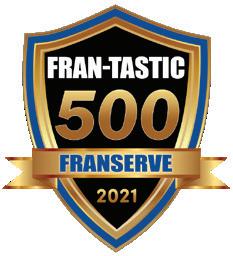
Batteries
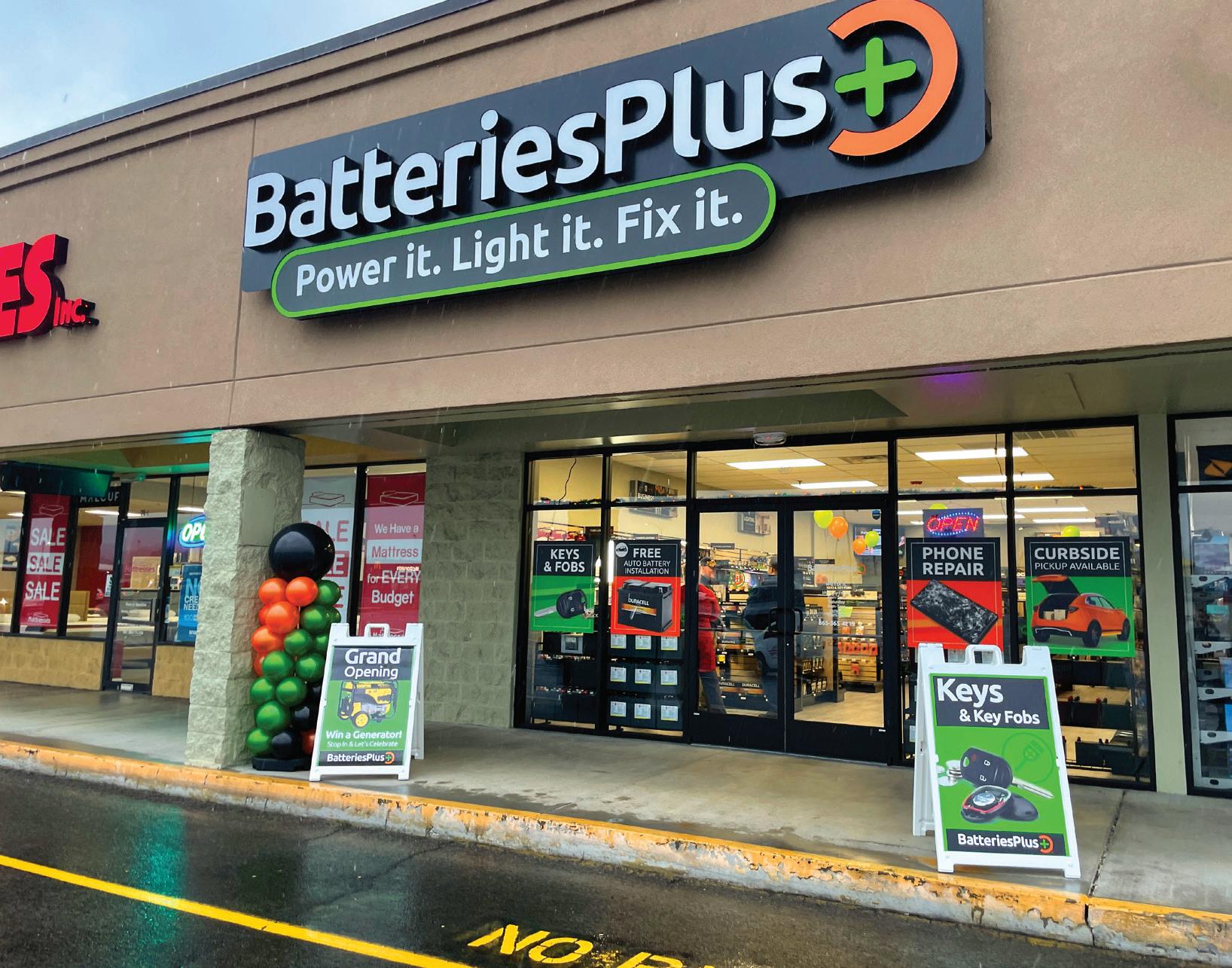
challenging economic conditions. We have a proven track record of riding out volatility and
even
throughout several recessions. Not only are our products needs-based, but our business is built to offset many of the challenges facing small business owners today.
delivered hot and fresh daily to each recipient’s home by volunteers, they were effectively shut down for what would have lasted 18 months. Our general manager, Francis Traver, came up with the idea that since each county had a full staff for these programs, we would provide the meals frozen, and each county would use their staff to deliver five frozen meals once a week to each recipient, instead of a volunteer delivering one hot meal each day. Over the 18 months it took to get fully back into the program, every recipient continued to receive their meals.
There are two things I’m most proud of: 1) We retained every mem ber of our management teams and professional staff and 85% of our key hourly employees. Though we are not what we consider fully staffed, we are staffed at a level to handle our business and far better off than everyone we know. 2) Our general and associate managers. After all our restaurants were fully open, our business was doing incredibly well. We calculated everyone’s compensation compared with the previous year, then wrote some very large checks to each of them that made their earnings whole to the previous year. While delivering these checks to these individuals, I found out that some of them had been taking the checks we were sending them during the shutdown, cashing them, and giving that cash to their employees most in need. This humbled me more than anything. Heartwarming!
In summary, we have recovered, we are well over pre-pandemic guest counts and sales, and are setting record profits. There are only a few non-QSR/fast-casual restaurants that can say that. This is all due to the leadership in our restaurants. Golden Corral has been very supportive of the methods we used, communicating successes in other areas, and keeping every franchisee up to date, all of which was paramount.
What changes do you think will be permanent? I believe that is still to be seen. We will retain whatever is necessary to keep our employees and guests safe.
Annual revenue: $69 million for our 14 restaurants.
2022 goals: The same as every other year: to grow our market share in each market we serve.
Growth meter: How do you measure your growth? Guest count growth. Economic factors may dictate price; we look at sales and expenses on a per-guest basis. If we aren’t growing guests, we really aren’t growing.
Vision meter: Where do you want to be in 5 years? 10 years? Enjoying life and hearing about the successes of this organiza tion, moving forward, sideways, or upward, whatever they may be. Do you have brands in different segments? Why/why not? We ventured into other businesses/franchises (well-known fast-casual and full-service) and divested them within 2 to 3 years, as it wasn’t a great fit.
How is the economy in your regions affecting you, your employ ees, and your customers? We do everything possible not to allow the economic problems that we are facing affect our guests. We have been very fortunate in staffing where we could use a few more people, but we are in far better shape than the industry as a whole and other restaurants within our markets. The same goes for food availability. Our vendors have bent over backward to get us the products we need, and we are very thankful for them. Telly Smith, who runs Golden Corral’s purchasing and distribution, has been tremendous in this regard.
Are you experiencing economic growth in your markets? Across the board, yes.
How do changes in the economy affect the way you do business? We won’t let the economy affect the way we do business. We may struggle with economic issues, but we do not let it affect the way we do business. That would be a terrible thing to do.
How do you forecast for your business? One restaurant at a time, in small pieces, starting with guest counts by day, then building out from there. We definitely involve each general manager’s input.
What are the best sources for capital expansion? Preferably from within. Our capital company has been tremendous in supporting our plan and working with us throughout the pandemic after the shutdown.
Experience with private equity, local banks, national banks, and other institutions? Why/why not? Over the years we used all of these except for PE groups. We found that as we grew, we required lenders specifically attuned to our industry. Any smart operator should look at all sources of financing within their scope. What are you doing to take care of your employees? I’d say the first responsibility to each employee is to give them outstanding employees to work with. We do what we need to do.
How are you handling rising employee costs (payroll, minimum wage, healthcare, etc.)? With great care. There are a lot of people specifically targeting our people.
What laws and regulations are affecting your business and how are you dealing with them? Regulations are constantly being added and we confront and deal with them. For me personally, it’s most difficult when a regulation detracts from an individual’s responsi bility for themself, their family, and in their decisions and actions. How do you reward/recognize top-performing employees? There are countless ways. However, we believe the most important is to recognize top performance immediately and to let everyone else know. Our team knows!
What kind of exit strategy do you have in place? As far as our business, we won’t be talking about an exit strategy for at least another generation. We are in this for the long term. As far as my personal exit strategy, as soon as my son Brendyn and our leader ship team are comfortable I’ll exit!
WE WON’T LET THE ECONOMY AFFECT THE WAY WE DO BUSINESS. WE MAY STRUGGLE WITH ECONOMIC ISSUES, BUT WE DO NOT LET IT AFFECT THE WAY WE DO BUSINESS.










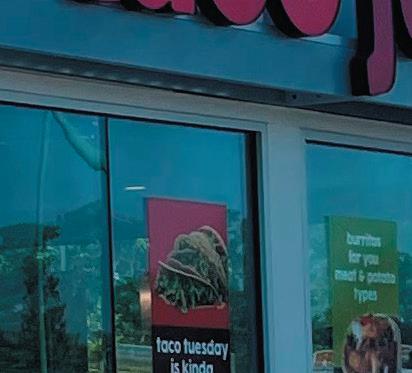




















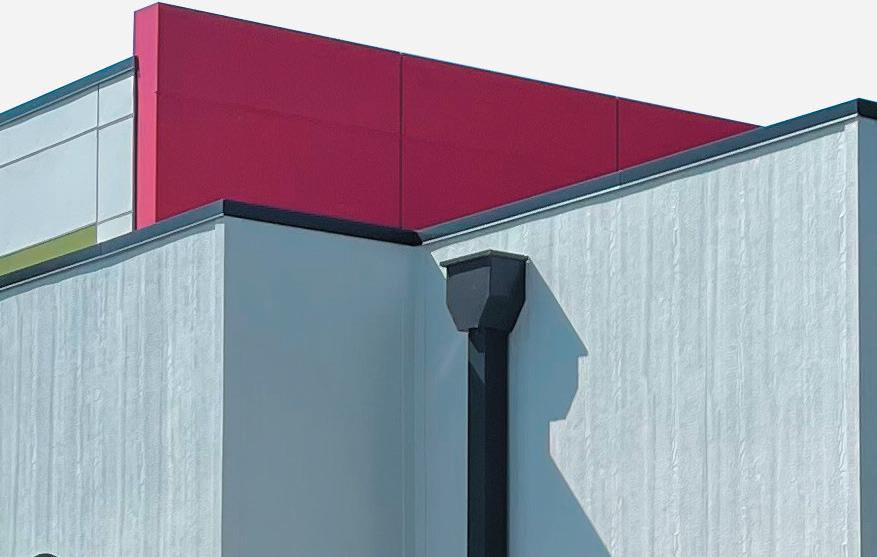














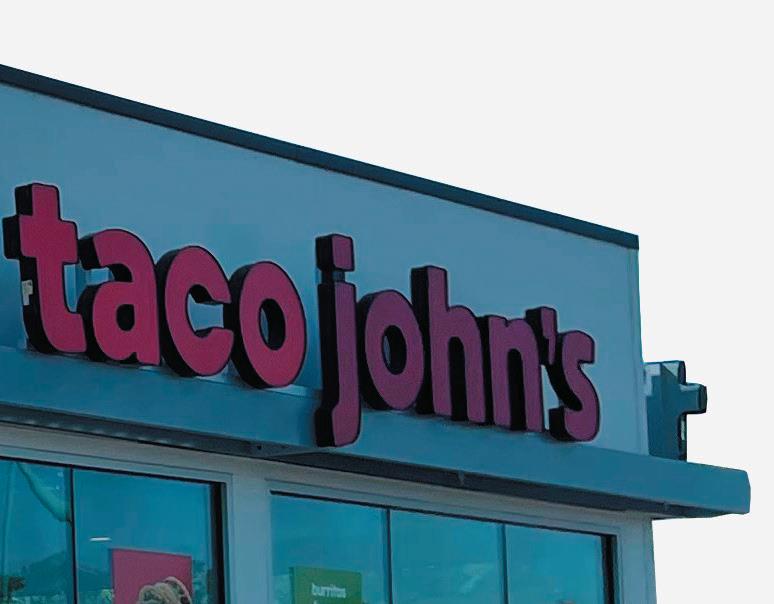



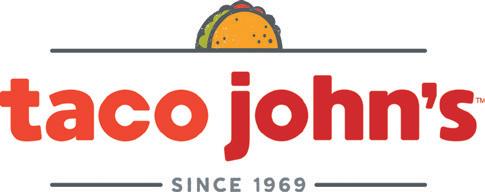
















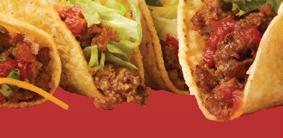









Multi-unit and multi-brand operators continue to increase in number—and they’re getting bigger every year. These “dominators” grow their portfolios through acquisitions, new unit buildouts, refranchising, and buying up units from retiring franchisees. This trend accelerated during Covid-19 as smaller or weaker operators sell to larger and stronger ones.
That’s why we have to provide an “asterisk” to the rankings yet again this year: they were compiled from FDDs created during the pandemic—and thus are not as representative as in the past as franchisees both large and small divest units, file for Chapter 11 protection, or simply decide it’s time to retire or move on to new adventures.
On the upside, there are the franchisees and brands that quickly adapted, were deemed essential early on, or whose business model accommodated the evolving new normal (drive-thrus, delivery, carryout,
ALABAMA TACALA 120
ALASKA MICHAEL DAVIDSON 21
ALASKA SUBWAY DEVELOPMENT OF ALASKA 21
ARIZONA DESERT DE ORO FOODS 172
ARKANSAS K-MAC ENTERPRISES 95
CALIFORNIA G&M OIL CO 278
COLORADO ALVARADO CONCEPTS 94
CONNECTICUT WENDPARTNERS FRANCHISE GROUP 44
D.C. TEAM WASHINGTON 9
DELAWARE MICHAEL A MEOLI 16
FLORIDA FLYNN RESTAURANT GROUP 175
GEORGIA GPS HOSPITALITY 101
HAWAII SCANLAN MANAGEMENT 60
IDAHO FLYNN RESTAURANT GROUP 42
ILLINOIS DHANANI GROUP 208
INDIANA CARROLS RESTAURANT GROUP 101
IOWA MERCHANT INVESTMENTS 40
KANSAS ROTTINGHAUS COMPANY 150
KENTUCKY FOURTEEN FOODS 62
LOUISIANA GPS HOSPITALITY 119
MAINE FQSR (DBA KBP BRANDS) 29
MARYLAND FLYNN RESTAURANT GROUP 91
MASSACHUSETTS HK ENTERPRISES 73
MICHIGAN VISION GROWTH PARTNERS/SUPER C GROUP 79
MINNESOTA BORDER FOODS 87
MISSISSIPPI FLYNN RESTAURANT GROUP 130
MISSOURI FLYNN RESTAURANT GROUP 140
MONTANA MERIDIAN RESTAURANTS UNLIMITED 21
smaller footprints, etc.). Banking on their good credit, solid infrastructure, and proven track record, these dominators moved forward and are creating historically large franchisee organizations that have changed the face of franchising.
Even during these post-pandemic (we hope) times, they continue to create jobs by the thousands, hiring young employees and providing a career path for them to grow. They do business with local suppliers—lots of them! And they give back to their communities, encouraging their employees to support local organizations and charities—especially now. (Think hurricanes, floods, droughts, and inflation.)
No franchisee gets to the top without years of hard work, sacrifice, perseverance, and an unwavering desire to be the best. So congratulations to this year’s Dominators!
STATE (and D.C.)
LARGEST FRANCHISEE UNITS
MONTANA THE TAX DOCTORS 21
NEBRASKA DHANANI GROUP 42
NEVADA TERRIBLE HERBST 85
NEW HAMPSHIRE THE NAPOLI GROUP 32
NEW JERSEY BRIAD RESTAURANT & LODGING GROUP 62
NEW MEXICO B & B CONSULTANTS 68
NEW YORK METRO FRANCHISING COMMISSARY 139
NORTH CAROLINA CARROLS RESTAURANT GROUP 150
NORTH DAKOTA MIDWEST SUBWAY DEVELOPMENT 20
OHIO THE COVELLI FAMILY LIMITED PARTNERSHIP 135
OKLAHOMA LOVE’S TRAVEL STOPS & COUNTRY STORES 105
OREGON AAMBROSIA QSR 60
PENNSYLVANIA FLYNN RESTAURANT GROUP 123
PUERTO RICO SOUTH AMERICAN RESTAURANTS/LARREA GROUP 113
RHODE ISLAND THE JAN COMPANIES 25
SOUTH CAROLINA CAROLINA RESTAURANT GROUP 53
SOUTH DAKOTA VELARDE 23
TENNESSEE CARROLS RESTAURANT GROUP 125
TEXAS SUN HOLDINGS 427
UTAH SIZZLING PLATTER 64
VERMONT VERMONT DONUT ENTERPRISES 15
VIRGINIA BODDIE-NOELL ENTERPRISES 176
WASHINGTON NORTHWEST RESTAURANTS 106
WEST VIRGINIA LITTLE GENERAL STORE 48
WISCONSIN VELARDE 108
WYOMING GRAND MERE CAPITAL 20

LOS ANGELES-RIVERSIDEORANGE COUNTY CA 19,133
NEW YORK-NORTHERN NEW JERSEY-LONG ISLAND NY-NJCT-PA 18,836
CHICAGO-GARY-KENOSHA IL-IN-WI 11,158
WASHINGTON-BALTIMORE DCMD-VA-WV 10,609
DALLAS-FORT WORTH TX 10,405
HOUSTON-GALVESTONBRAZORIA TX 9,451
ATLANTA GA 8,607
SAN FRANCISCO-OAKLANDSAN JOSE CA 7,779
BOSTON-WORCESTERLAWRENCE MA-NH-ME-CT 7,372
PHILADELPHIA-WILMINGTONATLANTIC CITY PA-NJ-DE-MD 7,119
DETROIT-ANN ARBOR-FLINT MI 6,477
PHOENIX-MESA AZ 5,973
SEATTLE-TACOMABREMERTON WA 5,049
DENVER-BOULDER-GREELEY CO 4,955
MIAMI-FORT LAUDERDALE FL 4,642
MINNEAPOLIS-SAINT PAUL MN-WI 4,636
TAMPA-SAINT PETERSBURGCLEARWATER FL 4,536
SAN DIEGO CA 3,861
CHARLOTTE-GASTONIA-ROCK HILL NC-SC 3,828
ORLANDO FL 3,781
SAINT LOUIS MO-IL 3,713
CLEVELAND-AKRON OH 3,540
PORTLAND-SALEM OR-WA 3,367
LAS VEGAS NV-AZ 3,229
CINCINNATI-HAMILTON OHKY-IN 3,221
INDIANAPOLIS IN 3,171
SACRAMENTO-YOLO CA 3,063
SAN ANTONIO TX 3,058
AUSTIN-SAN MARCOS TX 3,003
KANSAS CITY MO-KS 2,989 NASHVILLE TN 2,984
RALEIGH-DURHAM-CHAPEL HILL NC 2,946
FRAN CHISED UNITS
PITTSBURGH PA 2,834
NORFOLK-VIRGINIA BEACHNEWPORT NEWS VA-NC 2,803 COLUMBUS OH 2,740 MILWAUKEE-RACINE WI 2,391
JACKSONVILLE FL 2,322 SALT LAKE CITY-OGDEN UT 2,242
OKLAHOMA CITY OK 2,087
WEST PALM BEACH-BOCA RATON FL 2,054
RICHMOND-PETERSBURG VA 1,956 GREENVILLE-SPARTANBURGANDERSON SC 1,877 HARTFORD CT 1,815
GREENSBORO-WINSTONSALEM-HIGH POINT NC 1,788 LOUISVILLE KY-IN 1,668
NEW ORLEANS LA 1,654 MEMPHIS TN-AR-MS 1,611 KNOXVILLE TN 1,504 OMAHA NE-IA 1,471
GRAND RAPIDS-MUSKEGONHOLLAND MI 1,444
BIRMINGHAM AL 1,439 DAYTON-SPRINGFIELD OH 1,334
TULSA OK 1,286
CHARLESTON-NORTH CHARLESTON SC 1,285 SARASOTA-BRADENTON FL 1,241
LITTLE ROCK-NORTH LITTLE ROCK AR 1,175
COLORADO SPRINGS CO 1,161
FRESNO CA 1,159
TUCSON AZ 1,148
FORT MYERS-CAPE CORAL FL 1,144 COLUMBIA SC 1,129
DES MOINES IA 1,119
ALBUQUERQUE NM 1,115
BUFFALO-NIAGARA FALLS NY 1,085
BATON ROUGE LA 1,069
HONOLULU HI 1,064
BOISE CITY ID 1,028
LEXINGTON KY 991
ROCHESTER NY 990
MOBILE AL 980
ALBANY-SCHENECTADY-TROY NY 972
WICHITA KS 937 EL PASO TX 933 CHATTANOOGA TN-GA 930
PROVIDENCE-FALL RIVERWARWICK RI-MA 919
HARRISBURG-LEBANONCARLISLE PA 918 BAKERSFIELD CA 911 MADISON WI 906
AUGUSTA-AIKEN GA-SC 843 DAYTONA BEACH FL 842
MELBOURNE-TITUSVILLEPALM BAY FL 836
STOCKTON-LODI CA 836
ALLENTOWN-BETHLEHEMEASTON PA 830
LAKELAND-WINTER HAVEN FL 808
FAYETTEVILLE-SPRINGDALEROGERS AR 805
JACKSON MS 791 TOLEDO OH 759
SAVANNAH GA 755 PENSACOLA FL 750 HUNTSVILLE AL 749
FORT WAYNE IN 712 SYRACUSE NY 706
MYRTLE BEACH SC 702
MCALLEN-EDINBURG-MISSION TX 698
WILMINGTON NC 690
PROVO-OREM UT 683
FORT PIERCE-PORT SAINT LUCIE FL 654
JOHNSON CITY-KINGSPORTBRISTOL TN-VA 653
SCRANTON-WILKES-BARREHAZLETON PA 646
MODESTO CA 641
SPOKANE WA 640 RENO NV 639
SPRINGFIELD MO 636
LAFAYETTE LA 633 MACON GA 617
YOUNGSTOWN-WARREN OH 603
(50 states, Washington, D.C., Guam, Puerto Rico, and the Virgin Islands) MSA FRAN CHISED UNITS MSA FRAN CHISED UNITSMore than 290 active locations from coast-to-coast, and dozens more in development.
600 in-network physicians caring for nearly 6 million patients a year.



More than simply an emergency room alternative, AFC provides value-based, patient-first healthcare.
franchising@americanfamilycare.com or visit AFCFranchising.com

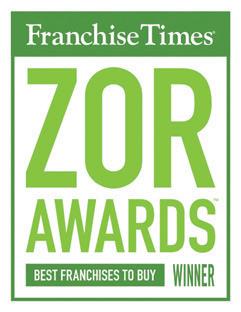
WEST (AK, CA, HI, OR, WA)
UNITS
G & M OIL CO 278
HARMAN MANAGEMENT 242
AMERICAN WEST RESTAURANT GROUP 233
FLYNN RESTAURANT GROUP 212
AKASH MANAGEMENT 211
SOUTHWEST (AZ, NV, NM)
UNITS
DESERT DE ORO FOODS 182 B & B CONSULTANTS 115
TERRIBLE HERBST 85 STINE ENTERPRISES 79
QUALITY BRAND GROUP 64
SOUTH (AL, AR, FL, GA, KY, LA, MS, NC, SC, TN, TX, VA)
UNITS
FLYNN RESTAURANT GROUP 854 SUN HOLDINGS 500 FQSR (dba KBP BRANDS) 496
CARROLS RESTAURANT GROUP 460
DHANANI GROUP 369
EAST (DC, DE, MD, NJ, NY, PA, WV)
UNITS
FLYNN RESTAURANT GROUP 262
CARROLS RESTAURANT GROUP 229 FQSR (dba KBP BRANDS) 143
METRO FRANCHISING COMMISSARY 139
BRIAD RESTAURANT & LODGING GROUP 113
MOUNTAIN WEST (CO, ID, MT, UT, WY)
UNITS
FLYNN RESTAURANT GROUP 160 SIZZLING PLATTER 105 HARMAN MANAGEMENT 104 ALVARADO CONCEPTS 94 MBN BRANDS 81
PLAINS (IA, KS, MO, NE, ND, OK, SD)
UNITS
ROTTINGHAUS COMPANY 285 FLYNN RESTAURANT GROUP 269 K-MAC ENTERPRISES 162 LOVE’S TRAVEL STOPS & COUNTRY STORES 158 FUGATE ENTERPRISES 138
MIDWEST (IL, IN, MI, MN, OH, WI)
UNITS
DHANANI GROUP 331 CARROLS RESTAURANT GROUP 288 FQSR (dba KBP BRANDS) 277 VISION GROWTH PARTNER/SUPER C GROUP 212 BORDER FOODS 177 EYM GROUP 177
NEW ENGLAND (CT, ME, MA, NH, RI, VT)
UNITS
DHANANI GROUP 100 HK ENTERPRISES 89 DE FOODS 61 FLYNN RESTAURANT GROUP 60 PR RESTAURANTS 60
Source: FRANdata Note: Data based on most current FDDs




In the early 1960s, as an increasing number of newly franchised restaurants began to dot the U.S. landscape, fueled by an ever-ex panding interstate highway system, Bob and Marjorie Minshew saw an opportunity and grabbed it.
The Minshews, who were living in Salt Lake City, signed on to become the first licensee for Sizzler Family Steak House, a restaurant chain that had its start in a converted office trailer in California in 1958. Over the years, the Minshews would go on to open several more Sizzler locations.
Fast forward to 2022. The company started by the Minshews, Sizzling Platter, now owns and operates 565 restaurants in the U.S. and another 100 in Mexico. In addition to Sizzler, the company’s brands are Red Robin, Little Caesars, Dunkin’, Wingstop, Jersey Mike’s Subs, Jamba, and Cinnabon.
With Sizzling Platter’s vast holdings, it’s hardly surprising that franchise operators frequently seek advice from the company’s president, Nathan Garn, when they’re trying to figure out if it’s the right time to add to their own portfolios.
In the U.S., more than half of franchisees are multi-unit operators, and the numbers are steadily increasing, according to the research firm FRANdata. But if you’re a franchise operator considering taking on more units, whether within the same brand or a mix of brands, what kind of evaluations should you do? How do you know if you have the infrastructure in place to be successful?
Although there is no one-size-fits-all answer, we asked Garn and other successful multi-unit operators to weigh in on those questions and share their strategies for smart growth.
When other franchise operators come to Garn to pick his brain about growing their businesses, he usually starts with capital—the human kind.
“It’s as simple as looking at your own team and saying, ‘Are we ready for more?’” Garn says. “And, when I say team members, I mean either a general manager who can step into a role where they oversee multiple stores, or someone who is currently overseeing multiple stores who can take on a new brand and grow that.”
Having the right people in the right jobs doesn’t only allow an operation to grow, it encourages growth. “A lot of the growth that we’ve done we’ve almost had to do,” he says, “to provide growth opportunities for our team members who were ready to grow, who needed a challenge, and who were up for a challenge.”
As part of its philosophy, the company always tries to fill lead ership positions by promoting from within. That means company executives stress team development through training and offering opportunities for employees to stretch.
“One of our strengths as an organization is our people. If they already know our culture, we know them, and we work well together, it just makes more sense to grow with them,” Garn says. “Really the only time we look outward is if we feel like it’s in a region where we don’t have someone yet who is developed enough. We don’t want to set a team member up for failure.”
Leaders: born and made
Damon Dunn is CEO and managing partner of Lagunita Franchise Operations, which has 30 Dunkin’ locations through out the Southeast and in Oklahoma and New Mexico. A year from now, his plans are to have at least 42 open.


When he bought his first five restaurants in 2016 in Mobile, Alabama, Dunn had no idea which employees would make good leaders. After he’d spent time working in the restaurants learning every aspect of the business, it became clear to him. At each location, Dunn paid attention to which employees seemed to be the prob lem-solvers, the ones other employees went to with their questions.
“I’m always identifying those people,” says Dunn. “Then I help professionalize that natural leadership.”
When leaders emerge, franchise operators must trust them to make decisions, says Andrew Howell, who, along with his father, owns 20 Tropical Smoothie Cafes and has plans to open three Another Broken Egg locations, all in Florida. Howell says it would be impossible for him and his father to add units if they weren’t willing to hand off some of the responsibilities.
“We know our Tropical Smoothie team—our district manag ers, our managers—is strong enough so that if we had to focus on something for a moment, they have it under control,” he says. “Even if you decide to go from one unit to three, the amount of time you spend in each decreases as you have more units or more brands. So you’re having to trust people to get the job done.”
Heather Safrit knows how hard it can be to try to do it all. She’s the COO and operating partner for a franchise group that owns 12 Sola Salon locations in Florida and Georgia. She and her partner signed a franchise agreement in 2013 to open nine salons in the West Palm Beach area.
“Originally, I was the team,” says Safrit. “I wore every hat until we had five locations. I probably waited a little too long to hire, so I can speak from experience that you really need to be proactive and be thinking ahead of the curve. You can get so busy and so wrapped up in the day-to-day operations and development that you just don’t have the time, quite frankly, to try to put a team in place. You want to have a plan in place before you get too far down the line.”
For franchise operators considering expanding their portfolios, it’s not just a matter of hiring the right people. It takes money to grow.
“If you don’t have the financial ability to grow, sometimes your appetite for growth is bigger than your stomach,” says Garn.
How much return on their investment (ROI) franchisees expect can vary, says Safrit. “What might be a great ROI to me might not be considered a great ROI by another. If someone is looking at purchasing a franchise, they should not only narrow down their decision by areas of interest and capital needs, but by what type of ROI they are looking for—both level of return and rate of return (ROR).”
And that’s where Safrit believes a franchise broker might be able to help potential franchisees. “The franchise broker can assist them with this by weeding out industry segments that might not meet a potential franchisee’s expectations. What ROI and ROR are acceptable is a question each potential franchisee must answer for themself.”
As for getting help with financing, it’s worth remembering that a first loan or investment is usually based on projections. After that, it’s about the performance of a franchise operator’s existing units.
“There’s one thing that’s central to growing all franchise business models, and that’s returns on capital allocation, period,” says Dunn, who partnered with investors to buy his restaurants. “Whether it’s debt or whether it’s equity—somebody else’s, your own, or a bank’s—at some point, there has to be some underwriting done, and that underwriting has to say that the four-wall unit is going
DAMON DUNN"UNDERWRITING HAS TO SAY THAT THE FOUR-WALL UNIT IS GOING TO PRODUCE X AMOUNT OF RETURN ON INVESTED CAPITAL (ROIC). THAT ROIC HAS TO MEET THE EXPECTATIONS OF THE CAPITAL SOURCE, OR GROWTH WILL NOT BE SUPPORTED.”ANDREW HOWELL
"EVEN IF YOU DECIDE TO GO FROM ONE UNIT TO THREE, THE AMOUNT OF TIME YOU SPEND IN EACH DECREASES AS YOU HAVE MORE UNITS OR MORE BRANDS. SO YOU’RE HAVING TO TRUST PEOPLE TO GET THE JOB DONE."
















































































to produce X amount of return on invested capital (ROIC). That ROIC has to meet the expectations of the capital source, or growth will not be supported.”
When deciding if it’s time to buy more, franchise operators must take a hard look at their bottom line. “If you want to grow your platform, you have to grow the platform in an accretive way. So you have to make capital allocations in an accretive way, which means it’s growing in value and meeting the expectations of your equity or your debt partners,” says Dunn. “If you don’t do that, if you can’t do that, then you can’t get access to debt and you can’t get access to equity. You can have an effective management team, brand support, and excellent customer service. Yet, none of that matters if you cannot meet the minimum ROIC expectations.”
To meet return expectations, franchisees must operate efficiently.
When Dunn bought his first five Dunkin’ locations in Alabama, he moved from California to learn everything about his stores and the market. Right away, he noticed some inconsistencies. During a given period one Dunkin’ would ring $800 in sales with five people working, while another location would ring the same amount with eight people on the clock. To understand why one restaurant was more efficient than another, he watched and learned something he never would have from an office in California.

Each station has training aids, like cheat sheets, that tell workers how to make a certain drink or sandwich. Use this many shots of espresso. Use this many pumps of caramel swirl.
Dunn could see that workers who didn’t have to stop to look at the training manual were much faster.
So he decided to buy laptops and tablets for each store and to require employees to go through Dunkin’s online training again. “I standardized my labor by understanding that if we train them better, I can use the same number of people at each store if they’re trained the same.”
Also, before Dunn arrived, each restaurant manager decided how many donuts to make each day based on rough estimates from past sales. Dunn invested in software that allowed him to analyze how many of each kind of donut were sold daily at what hour.
For a year, Dunn constantly collected data, constantly analyzed it, and constantly adjusted to eliminate waste. Then he went back to his investors and said it was time to buy more units. This time, his proposal was even more attractive, his information more precise.
“You give confidence to your investors,” says Dunn, who could now tell them: “If we invest X amount of dollars, we can get this return. And I know how to get these returns because I have opti mized our food and labor costs.”
Franchise operators trying to woo investors must know in advance what those investors are looking for, he says. “People are always asking me, ‘How did you find your equity partners?’ I tell them, ‘If you don’t know the answer is Yes before you go in and pitch, you have no chance at all of finding an equity partner. If you’re going in there to pitch an idea and don’t know how they are going to respond, you haven’t done the work necessary to go in there and pitch.’”
Once the money and people are in place, how do franchise oper ators know which brand is the best fit? Whatever due diligence a franchisee exercised before deciding on a first unit or brand should be the same for later ventures, says Howell.
Howell and his father made a decision to branch out by adding Another Broken Egg to a portfolio full of Tropical Smoothie Cafes. They haven’t opened the Another Broken Egg locations yet, but when they do, they’ll bring a lot of the knowledge they’ve learned from Tropical Smoothie.
“They’re both restaurants, so the skills we learned in one restau rant could be transferable over,” he says. “It’s a different set of similar skills is kind of how I look at it. Managing inventory, managing labor—all of that is going to be perfectly transferable.”
Both Garn and Howell say they would never consider owning brands that are in direct competition with each other, and most franchisors don’t allow that anyway. That said, maintaining good communication with their franchisors should be a priority for every franchisee, says Safrit.
“If you’re thinking about going outside your original brand, you definitely want to communicate with them and make sure they are on board with it, and not worried or concerned about your com mitment to their particular brand. It is a partnership. I think open communication is key.”
Finding the right cultural fit with prospective brands also is important, says Garn.
“When we look at other brands, it starts at, Do we feel like we align with the ethos of the brand? Do we feel like it’s a brand we can get behind, and can we get behind their management team and their executive team?” he says.
“Franchising is a long-term relationship. You’re going to go through good times and bad times with them. So first and fore most, we ask, do we have a cultural fit with the brand? And then, does it complement our existing portfolio of brands? Is it like the other brands we’re in?”
For Safrit and her partner, there was no question that Sola was right for them. “My partner and I had a unique situation. We had a mutual friend who was Sola’s largest operator, so we knew about the brand through him. We trusted him.”
But, even if prospective franchisees don’t have close friends to turn to for information and advice, they should make sure they talk to current franchisees who operate the brands they’re interested in, says Safrit.
“I think it’s really important to talk to a cross-section of owner ship structures,” she says. “Talk to small operators that are in the business. Talk to large operators that are in the business. And new operators and old operators. Operators in different parts of the country. I think that would give you a really good feel for everyone’s experience.” And, of course, anyone interested in buying a business must look at industry trends as well, she says.
NATHAN GARN"YOU’RE GOING TO GO THROUGH GOOD TIMES AND BAD TIMES WITH THEM. SO FIRST AND FOREMOST, WE ASK, DO WE HAVE A CULTURAL FIT WITH THE BRAND? AND THEN, DOES IT COMPLEMENT OUR EXISTING PORTFOLIO OF BRANDS?"

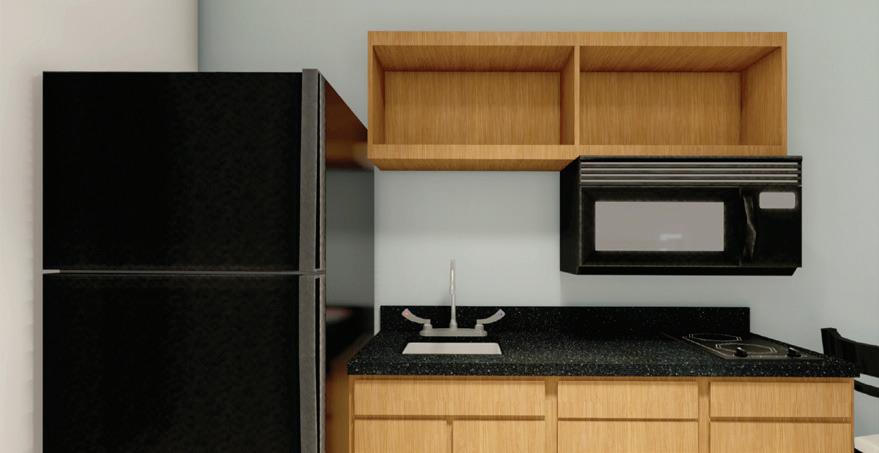


There’s no substitute for good research, says Howell, who will receive his MBA in the spring. “I throw a lot of numbers in an Excel sheet. I play with it and make sure I’m comfortable, over and over and over again.”
In spite of the inevitable challenges that come with adding units and brands, there also are advantages, particularly with vendors and suppliers.
“Because a lot of the brands we’re in are already pretty scaled, we’re fortunate that the brands leverage a lot of that for us. But there are certainly some benefits of scale, even outside of the brand, with the various vendors,” says Garn.
Safrit has plans to build more Sola Salons. She and her partner have already purchased additional development rights. But they are already reaping the benefits of size.

“Without question, the more units you have allows for econo mies of scale,” she says. “Actually, the more business you do with a company, the more of a priority you become for them, which generally translates into better service and the ability to negotiate lower rates. Having more units also allows you to stretch line items like marketing costs and insurance costs, which lowers the cost per unit for you.”
Franchisees can expect some growing pains as they add units, but should push forward, says Safrit. It’s just part of the growth process. “Unpredictable circumstances can sometimes stand in your way— for example, changes in the market, a lack of affordable real estate, unexpected construction costs, and supply chain issues, all of which we’re seeing across the country right now. Those are some unexpected things that can impede growth,” she says. “But I really think the ability to grow quickly goes back to, do you have the capital in place, or access to capital? And do you have the human resources?”
"THE MORE BUSINESS YOU DO WITH A COMPANY, THE MORE OF A PRIORITY YOU BECOME FOR THEM, WHICH GENERALLY TRANSLATES INTO BETTER SERVICE AND THE ABILITY TO NEGOTIATE LOWER RATES."
Pet owners parents need convenient, affordable access to veterinary care for their pets fur babies. By offering walk in care at affordable prices for the majority of their healthcare needs, PetWellClinic is at the forefront of a major shift in pet wellness.

It’s
are



available in
The information contained herein is not an offer to sell or the solicitation of an offer to buy a franchise. The franchise information contained herein is not directed to the residents of any particular jurisdiction. The offer of a franchise can only be made through the delivery of a franchise disclosure document. Certain states require that we register the franchise disclosure document in those states. We will not offer or sell franchises in those states until we have registered to do so (or obtained an applicable exemption from registration) and delivered the franchise disclosure document to the prospective franchisee in compliance with applicable law.

This franchise has been registered under the Franchise Investment Law of the State of California. Such registration does not constitute approval, recommendation or endorsement by the Commissioner Financial Protection and Innovation nor a finding by the Commissioner that the information provided herein is true, complete and not misleading.

The better-built mousetrap as a lure for business hasn’t changed much since an observant thinker pointed out the concept nearly 150 years ago. What has changed are the challenges—and the technology available to manage them. Data is abundant, processes com plicated, and the demand for efficiency more important than ever.
Franchisors and franchisees are fortunate, though, because they’ve been using their smarts to exploit various technologies and build that better mousetrap for their business. The category of franchise doesn’t matter. What’s clear is that “better” is definitely possible. Here are some examples of franchisees on the leading edge of using technology to improve their operations.
To Steven Majkrzak, the shift in the QSR sector—driven by con sumer demands for streamlined, low-contact interaction fueled by digital technologies—made it clear that he needed to adapt his Pancheros Mexican Grill operations. President and CEO of Mars Restaurant Group, Majkrzak opened his first Pancheros in Bismarck, North Dakota, in 2007. The past few years, he says, have seen significant advances in operations technology at Pancheros.
“The first step was investing in secondary production lines in order to segregate the production of in-store sales and digital sales,” he says. “As a franchisee, I viewed this a tremendous opportunity to meet the needs of our customers, so I was the first adopter of the second production line.”
The second step was building the first franchisee-owned location with a pickup window, which opened in June 2022 in Bismarck. This was the brand’s second location to have both a second produc tion line and a pickup window, and the first among its franchisees.
Before these advances, his locations were using one produc tion line to handle both digital and in-store sales. “As the digital component continued to grow, we continued to see a conflict in the prioritization of orders. Limited by one production line, the in-store orders, when combined with digital orders, created a sit uation where our operations needed to prioritize one or the other during our peak business hours,” he says. “We felt the frustration of customers from both in-store and digital sales as we attempted to balance the production of both segments, but we found this situation created a bottleneck in our flow of orders, meaning longer wait times for all.”
Because both of these changes were new to the brand, it was up to Majkrzak’s ops team, in collaboration with Pancheros corporate franchise consultants, to work through and help write the new procedures. This took quite a bit of trial and error, and time.
“Not only did we have to staff and produce in a completely dif ferent manner, it also required our IT systems to meet the needs of having multiple production stations,” says Majkrzak. “To help us understand how we wanted to manage and train additional employ ees, both the second production line and pickup window started with either me or my director of operations initially working in those stations.”
His customers appreciated the changes, which improved over all interactions, whether customers ordered through third-party delivery services, digitally, or by coming into locations to dine in or pick up some takeout.
“The component I appreciate the most is that our in-store guests get to have the classic Pancheros experience without our staff being concerned about prioritizing between digital and in-store orders. Our second production line also allows us to be more accurate and timely with our orders, which is of the highest importance to guests who are ordering digitally,” says Majkrzak. “Our pickup window in Bismarck was well received and continues to grow. We’ve seen pickup window usage grow exponentially and expect that, given the severity of North Dakota winters, it will continue to grow as we move into our first fall and winter.”
Majkrzak’s four Pancheros locations are all in North Dakota. “Despite not having an active development agreement with Pancheros, we’re actively and aggressively pursuing locations in our existing markets and other strong North Dakota markets like Grand Forks and Minot,” he says.
“The successes of our secondary production lines and pickup windows have had a tremendous influence on my desire to continue to develop locations. When you combine the brand’s willingness and ability to adapt to the changing marketplace and customer demands with my group’s ability to operate and grow, it makes for a productive franchisee-franchisor relationship that yields an opportunity to grow and flourish in both the short term and long term. That’s the dream scenario for every franchisee!”
Earlier this year, Justin Scotto, a certified restaurant broker with 20 years in the restaurant business, started using a software pro gram We Sell Restaurants implemented for its franchisees. Scotto is the multi-unit franchise partner of We Sell Restaurants for the Charlotte, North Carolina region, as well Columbia, Spartanburg, and Greenville in South Carolina.
Scotto began as a busboy as a teenager and worked countless restaurant jobs, from sports bars to sub shops. In recent years, he has developed and operated 12 fast-casual restaurants with Firehouse Subs. This makes him highly qualified to evaluate what’s needed to improve his business.
As a restaurant broker, he says, “We need to be able to connect and track hundreds of clients. This software not only tells us where our potential clients are located, it helps us track when they visited and the responses we received when interacting.”
The software works through an app on a phone or tablet to locate potential clients in a given market. The benefits, he says, are several.
“As a multi-unit owner, you have a clear understanding of where your market is at any given time, especially as you are opening new territories,” he says. “Any restaurant broker can also see where they have gaps in the market and have not worked productively to iden tify opportunities. The deployment of this technology has been a game changer in improving productivity and enhancing our time in the field.” It’s location-based and can be easily aligned with other marketing efforts, such as direct mail.
His employees love the new program, he says. “They’re not familiar with the market like I am, so when I send them out, they basically have a knowledgeable database in their pocket connecting them with potential clients.” And, when his staff enters a market, he can monitor every client they visit or interact with as they enter every communication they have with potential clients.
Jeff Flannery is a relative newcomer to franchising. He bought his first Hand & Stone Massage and Facial Spa in March 2019. It was a troubled location, but Flannery felt good about its turn around potential—that is, until the pandemic hit in early 2020. He’d already realized that the spa setting was complicated, with many processes that could be improved. “I always think about how to make things better,” he says.

“I always think about how to make things better. I could never have done it without the new technology tool.”
Jeff Flannery
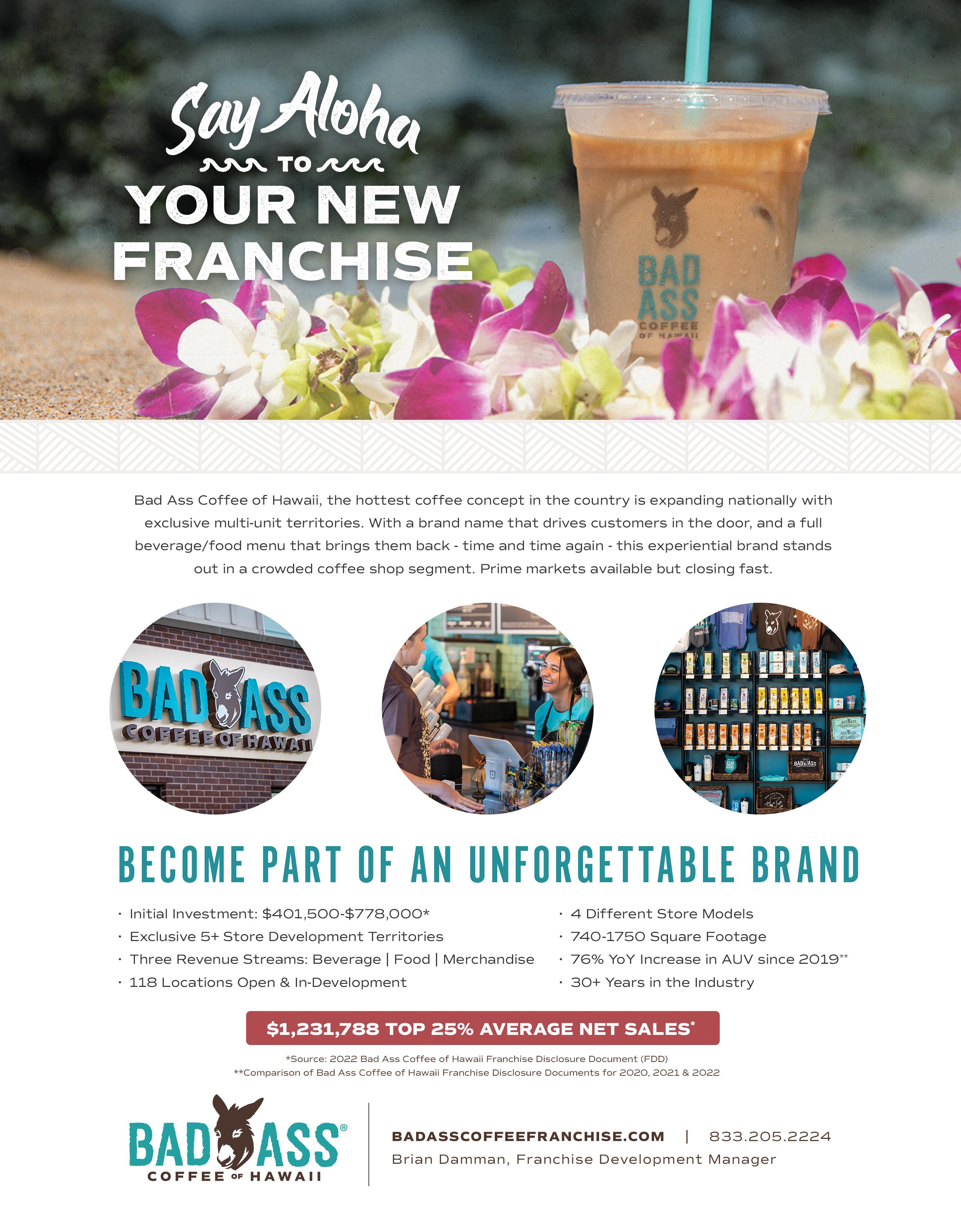
In this case, Flannery needed operations to be simpler and smoother, wanted more observable data, and for his solution to be scalable. He researched several IT solutions before finally settling on one that would allow him to program it into something that fit his needs exactly. Within 2 years, he now knows what’s going on in his 18 locations. “I could never have done it without the new technology tool,” he says.
The software does the obvious (e.g., streamlining room cleaning accountability), as well as handles more complex situations (e.g., how people who call for appointments are screened for possible medical issues that require a special response from spa personnel). “It’s not rocket science, but it takes someone to dive into the weeds to figure it out,” says Flannery.
The platform and its dashboard have made the invisible visible, for everything from time clock violations to room assignments and vacation requests, he says. “We’ve integrated all the systems because we can’t be in all the spas. This way, we know what’s going on.”
The problem, says Flannery, is that the simpler the solution, the harder it is to create. “You have to know the limitations of the software and you have to plan for exceptions to the rules when the process breaks.”
Then there’s the human factor, which involves training, change management/user buy-in, and expense—an investment you hope will pay off over time. “You have to get people to use it. We tell our managers to enable employees, to show them how to fill out the form.”
What employees do appreciate is being able to see the metrics of their work, Flannery says. Recruitment and training manuals are also part of the new platform. “It’s not a system, it’s a culture. And every month we add new metrics. If you can dream it, we can probably build it.”
Nick Marco owns nine Hand & Stone locations in New Jersey and is a regional developer for the franchise in Ohio, where 14 locations are open. Building an organizational culture of transparency was important to him, as that transparency supports a comprehensive system that enables several kinds of accountability, from onboard ing to project management and daily responsibilities. Marco says he couldn’t do any of it without the project management software he’s customized for the spas.
For example, the software requires that no meeting is ever ended without a list of action items, which are then entered into a play book visible to anyone at a supervisory level and above. “So you never have to worry about what it was you wanted me to do,” says Marco.
In addition, he says, “Anything our employees need can be put into a form that will go to the right person—and employees can see the progress.” As needs change, the software can be edited to accommodate those changes. Initially, some employees felt over whelmed with the new system. But once they used it, he says, “most of them have embraced it.”
Steve McFarland, a longtime business executive who owns two School of Rock locations in Indiana, is a big fan of the brand’s Method App, which includes exercises for students, a curriculum book written for teachers, and a way to store all the songs and shows produced each season. Before the app, teachers and directors had to assemble their own curriculum, songs, guitar tabs, lyrics, and

content—whatever they were going to use in teaching—a typical approach for music schools.
“We now have a coordinated system that’s been awarded a patent for teaching music,” says McFarland. The app also prevents copy right violations that might occur for the books and lyrics teachers might use.
“It was very cumbersome to ensure we were doing that legally before the Method App came along,” he says. “The engine also gives our instructors the ability to search for a concept, and it will show the songs that teach that concept. Or, if a student is assigned to a song in a show, the teacher can search for the song in the engine, find out what concepts are being taught, and find other songs that teach the same concept.”
Students can now be given assignments in the app and the teacher can check the homework. The app can also show students their grade and tell the teacher how many attempts were made. Songs can be assigned to be played with the backing track, strip ping out the instrument, or with a metronome.
Beyond those important tools, says McFarland, “We have a con sistent teaching methodology that all our teachers use. It allows us to take performing musicians who have a passion for their music and give them the tools to start teaching—without previous teach ing experience.”
The app also allows the school to monitor and report on assign ments and to measure progress on homework as well as the student’s engagement. If a student isn’t doing their homework, the school can follow up with them… and their parents.
One platform for all Xiaoming Hu and Cesar Shih, his partner in several locations of The Habit Burger Grill in Las Vegas, appreciate the value of the brand’s proprietary technology that, he says, makes multiple-unit ownership more possible. Using it provides them with access to all channels, from POS to both the front and back of the house, through a single proprietary platform. “It’s less stressful,” says Hu. “If you have bad technology, it’s very time-consuming.”
The technology helps franchisees run restaurants and manage operational changes without having to log into several different systems. This allows them to manage digital orders, control staffing hours, remove unavailable menu items from ordering platforms, and make other day-to-day adjustments, all in one place.
To answer questions and aid newer team members, all recipes and menu item builds are easily accessible with a few simple clicks. Digital ordering platforms are integrated and the restaurants can send guests’ orders to the kitchen on the fly if a driver or guest arrives earlier than scheduled. The platform also has a built-in quality assurance audit component, which helps measure the effec tiveness of restaurant operations and ensure that they’re consistent throughout the locations.
“We now have a coordinated system that’s been awarded a patent for teaching music. It was very cumbersome to ensure we were doing that legally before the Method App came along.”
Steve McFarland













“To help provide information that you can respond to in a more timely fashion, we would like a system that can give you KPI data daily or weekly in real time.”
Kristi Mailloux & Todd Recknagel

Give us this day our KPIs
Todd Recknagel and Kristi Mailloux are partners in PCRK Group, which owns 96 Massage Envy locations in 11 different states. This makes them the largest employer of massage therapists in the U.S.
The pair are developing a soon-to-be-launched software dash board to scoop up information from accounting and payroll software and gather operational data from the franchisor portal. The goal is to help managers focus on the KPIs driving their loca tions.
“Our particular business is reasonably complex because of mem bership sales, repeat and recurring revenue, accrued services, retail sales, inventory management, payroll management, and the inter relation of all these items,” says Recknagel.

“A typical accounting system might give you data on average 25 to 30 days late,” he says. “To help provide information that you can respond to in a more timely fashion,” he says, “we would like a system that can give you KPI data daily or weekly in real time.”
Edible’s ncompass app, says Geva, “has been phenomenal in pro viding real-time metrics so I can manage, track, and analyze it no matter where I am, despite the thousands, if not millions, of data points from managing multiple franchise locations."
Uri Geva is a partner in CGHU Investments, which owns and manages the largest group of Edible Arrangements franchises, with 28 locations in Texas, Oklahoma, and Florida.
With such a large number of locations in multiple states, realtime metrics require an easily accessible system. Edible’s ncompass app, says Geva, “has been phenomenal in providing real-time metrics so I can manage, track, and analyze it no matter where I am, despite the thousands, if not millions, of data points from managing multiple franchise locations. Sales, inventory, customer calls, who is working at any moment in our stores—all data can be addressed quickly and efficiently.”
Ncompass is simple to use and required little, if any, training, says Geva. And his management team loves it. “Without it,” he adds, “I’m not sure how we could manage locations in three states over such a large geography.”
At Inspire Brands, Vice President of Restaurant Operations Innovation & Profitability Vans Nelson did what all of us had to as the impact of the Covid pandemic became evident: adjust to an altered way of life. For customers, this meant dining off-premise for the foreseeable future. That new real ity, says, Nelson, was the inspiration for the Alliance Kitchen, the first-ever multi-brand ghost kitchen.
The Alliance Kitchen is segmented with workstations designed to fulfill orders for several of Inspire’s brands: Arby’s, Buffalo Wild Wings, Jimmy John’s, Sonic Drive-In, and Rusty Taco. Guests can order through each brand’s individual online ordering platform or through third-party delivery aggregators. Delivery and takeout options are also available.
At approximately 7,500 s.f., the Alliance Kitchen has heated lockers for order pickup, as well as a lounge for delivery drivers, phone charging stations, free Wi-Fi, and complimentary Dunkin’ coffee for all drivers.
Inspire launched the Alliance Kitchen in 2021 in Atlanta, home of its Global Support Center and where the company is based. The workforce was cross-trained in a process that combined the necessary training for all five brands. The multi-brand ghost kitchen also serves as an environment to test new labor models, kitchen layouts, and menu items.
Nelson says the results have been impressive. “Our tech nology advancements here, including the launch of the Alliance Kitchen, have led us to over $7 billion in digital sales over the last year, accounting for more than 20% of our total domestic system sales.” Operationally, compared with standalone restaurants, Inspire has found that the con cept reduces labor needs by 54%, square footage by 19%, equipment costs by 45%, HVAC tonnage by 71%, and kitchen exhaust by 50%. Now that’s innovation!




















Matt Forbush was looking for a solution to a problem he had managing his franchise locations. He couldn’t find one he liked, so he came up with his own. It worked so well that he started a company to market it to other franchisees in similar straits.
Many innovations that work in one environment don’t translate to other settings. Too often, they’re too specific or not economical to scale beyond their single applica tion. Sometimes, however, circumstances align to create software that can be built and applied beyond its initial use. Forbush thinks he’s found one, and the acceptance in the market is backing him up.
While Forbush initially developed the solution for him self, he thought it might be useful for others in similar operational settings. So in 2019, he gave up active own ership of his franchise locations and became a silent partner in almost 50 snack brand locations across the Southeast. He named the product zignyl and made it his full-time endeavor.
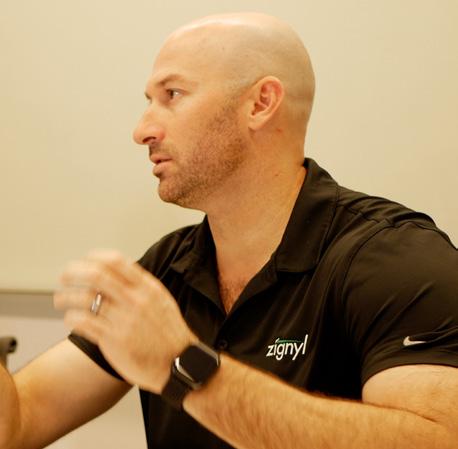
Forbush entered franchising in 2007 with an Auntie Anne’s. In the ensuing 15 years, he added 12 other small business and franchise locations, including Cinnabon and Otter’s Chicken Tenders. He soon began to realize that owning multiple sites made seeing red flags difficult.
“The reality is you do not have time every day to sift through checklists and time punches and daily sched ules,” he says. Without paying regular attention to details, he says, “You’re missing the trends of how the store is performing and—just as important—which way management at a location is trending.”
He wanted to find a way to allow owners to be more proactive with action plans to address issues when they arose. Enter zignyl, a software solution to help QSR operators manage all their brands and locations; report and optimize sales, labor, and tasks; and reward their teams with incentives—all from a single platform. It also supplies alerts to track trends, visualize labor needs based on sales forecasts, drive sales through employee engagement, and generate a comprehensive look into a business operation.
Making the best use of employees’ time has huge financial implications, of course, but it often is harder than one might think. “I often see owners who have a false sense of security because they stay under a certain number of hours per week when scheduling,” Forbush says. “Those hours are often given out midweek when they aren’t needed, leaving them understaffed on the weekend when they need all hands on deck to maximize their potential with mall traffic.”
In addition, helping employees see how they are doing can be a powerful incentive. “We’re able to accomplish this largely by the use of our incentive programs, which give a financial reward to employees when they hit a daily team goal,” says Forbush.
“If their forecast is $2,000 for the day and they do 15% more than that, everyone working that day gets an additional $1 per hour. This has proven to increase sales on average more than 10% for our clients, while also driving employee engagement, increasing retention, and lowering labor costs, all while paying employees more. We also have a comprehensive tip pooling solu tion as that becomes more prevalent in the QSR and snack brand space.”
The software compiles all of this information into a comprehensive payroll report customized to the fran chisee’s payroll vendor. “That saves them a tremendous amount of time by being able to aggregate all location hours and employees—including calculating hours combined by multiple locations an employee works at for overtime calculations—tip pool amounts, and incen tive earnings,” says Forbush. “It’s not uncommon to hear that we have decreased a client’s payroll process from 3 to 5 hours to less than 15 minutes with our custom exports.”



Gig workers offer stability to understaffed franchises
among franchisees for many reasons, but mainly because it offers the flexibility work ers now crave.
Earlier this year, in a survey of 3,000+ hourly workers, we found that 66% reported flexibility as one of the first things they look for when applying for a job. That’s right up there with pay rates—which tells you how important flexibility is now.
Making it work for your franchise
takes one extra task off your plate and fills your schedule as needed.
Another option is to incorporate hourly workers into your franchise by using a general hourly worker platform. This gives you the advantage of bringing on work ers for what time frames you both agree on, from one-off shifts to quick part-time, regular part-time, or even full-time. In this scenario, you will pay each person as an independent contractor.
Written By MATHIEU STEVENSONIf you’re just getting back from post-pan demic binge vacationing and haven’t noticed, the U.S. job market is having a rough time. This includes new challenges within the formerly “white-hot” white-col lar job market. Surprisingly, it also includes glitches within the darling of the market, the tech sector. Companies from coast to coast are now pulling back on hiring as they rethink strategies amidst today’s economic uncertainties.
While the impact on franchising has not been as severe—yet—trends suggest that long-term changes lie ahead for all com panies everywhere. Regardless of what color collar your workers wear, changes are coming.
One of the most noticeable shifts among franchisees is the embrace of gig workers. At Snagajob, where we match businesses with hourly workers, we’re seeing a major surge in franchisees getting ahead of the curve by changing their playbook to include gig workers. If you’re operating a franchise, you’ll want to explore the who, what, why, where, and how of this gig phenomenon.
First, what exactly is gig work? Plainly speaking, gig work is when independent workers provide on-demand services to a company for a temporary period of time. Gig work is becoming increasingly popular

Granted, hiring hourly workers can bring new intricacies to your business. The good news is that you’re not alone in thinking about how to incorporate gig workers into your workplace.
In the survey I mentioned, we also queried the employers of hourly workers. Nearly half (more than 45%) reported that they’re now considering using gig workers/ shift workers to fill in their scheduling gaps.
Since the gig economy is such a great fit for franchises and hourly workers alike, now is an excellent time to begin planning how to build this valuable partnership into your current work structure. To begin, we recommend asking yourself three questions to evaluate your readiness:
• Do you often have gaps in your current employee schedules?
• Do you lack the bandwidth to find, recruit, and hire full-time employees?
• Are you comfortable bringing on team members who aren’t full-time staffers?
How do you get started?
There’s no single, universally accepted way to embark upon gig hiring. Check out the fol lowing options and see what’s right for you.
One popular option is to work with com panies that provide hourly workers. This allows you to tap into a pool of vetted W-2 employees looking to pick up shifts at com panies posting jobs. This option will give you the added benefit of that third party paying your gig workers. This is particu larly helpful as you explore this option, as it
Either way, you’ll need to get your exist ing staff on board with upcoming changes. This includes informing managers and support staff. Consider outlining talking points to explain what’s happening, and how you’ll be accommodating the new gig workers and current workers. There shouldn’t be a lot of concern among your team, as most will realize that these hourly workers are here to help them get their jobs done—and to free up their schedules for other projects and time off when needed.
Hourly gig workers exist today because it’s a win-win for everyone. If full-time workers were getting the flexibility and wages they wanted, everyone would work full-time. End of story. But the post-pandemic reality is that the overwhelming majority of busi nesses can’t offer the level of freedom and compensation needed to staff up to 100%.
However, savvy franchisees can get a leg up now by filling these open shifts with workers looking for this exact opportunity. The gig worker pockets an extra $150 for a birthday gift, a weekend getaway, or to pay the electric bill. You get to keep your business running smoothly as consumer demand skyrockets now that the pandemic is easing up.
This new way of working is all made pos sible by the blossoming gig economy.
Mathieu Stevenson is CEO of Snagajob.











Marketing guru and author Seth Godin is big on Yes. “Yes is an opportunity and Yes is an obli gation.... There will always be a surplus of people eager to criticize, nitpick, or recom mend caution. Your job, at least right now, is to reinforce the power of the Yes.”
And yet, too many employees still auto matically say No to customers.
I hate the word No. I truly do. I believe it should be stricken from everyone’s busi ness vocabulary. No is too often code for, “I don’t want to make the effort to figure out how to give you what you’re asking for.” Not exactly a key to success!
While staying in a prominent hotel in Las Vegas, I ordered room service. Asked if I wanted fries or coleslaw as my side, I asked if I could have a side of fruit. The per son’s response was a quick and unfriendly, “No! Do you want fries or coleslaw?” What type of question was this?!
I replied, “What do you mean, No? I see a fruit dish on your menu.” She responded, “Well, I would have to charge you.” I responded, “I wasn’t asking for it free.”
Talk about an example of negative ser vice. This team member forgot they were in the business of hospitality. How easy it would have been to say, “Certainly. While you cannot substitute the fruit for your side dish, I can add it to your order.”

Similarly (and more than a few times), I have been in a restaurant where one of my sons didn’t like anything on the kid’s menu and asked if he could have a grilled cheese sandwich. Again, nearly every time, the answer was No. Once I asked the waiter, “Do you mean to tell me that your restaurant doesn’t have bread and cheese that some one could throw on a stove?” The waiter responded, “Yeah, but I wouldn’t even know how to ring it up.” To which I replied,
“I don’t care if you charge me the price of a steak. You don’t want my kid upset, because he can empty this restaurant faster than a fire can!”
Yes, we have no bananas
Restaurateur Cameron Mitchell, author of Yes Is the Answer. What Is the Question? and owner of 42 restaurants with 19 different concepts, created a brilliant metaphor on which his company’s service philosophy is founded. He and his family were at a restaurant when his young son asked if he could have a milkshake. The server said No. Knowing the restaurant had ice cream, milk, and a blender, Mitchell couldn’t understand why someone wouldn’t accom modate a guest on such a simple thing.
The milkshake became an icon, remind ing everyone at Cameron Mitchell Restaurants to find a way to say Yes. Since then it has developed a life of its own. The company starts every meeting with a Milkshake Toast, and gives a Milkshake Award to the associates who best demon strate the spirit of their service brand promise, “Yes is the answer. What’s the question?”
Focus on what you can do
Whenever a customer approaches your employees, and before they can even say a word, an employee should say Yes. Saying Yes before a customer even asks something? Think of the surprise! Empowered employ ees usually can figure out a way to fulfill most, if not all, requests.
The best customer experience brands guide their employees during customer service training on how to not say No in situations where they can’t say Yes. Nearly always, there are other options. If a cus tomer wants something that isn’t possible, instead of telling them what you can’t do, tell them what you can do. At my first
business, John Robert’s Spa, if a guest arrives extremely late for an appointment and asks if we can still accommodate her, our guest care team is trained to respond, “While we can’t perform a full pedicure, we can do an express pedicure!”
In implementing this, first consider all the common situations that may arise in which it’s difficult for you to say Yes to a customer, then work on creative alterna tives. You are training your employees to make your customers feel that their request was granted—a positive outcome in con trast to a situation like my side-of-fruit dilemma.
The second exercise is to create a meta phor or icon similar to the milkshake, and then promote it constantly to your entire organization on a daily basis in many ways, including recognition, signage, and awards.
Empower everyone in your company to do whatever it takes to deliver genuine hos pitality and make customers happy. And enjoy that milkshake with your grilled cheese sandwich!
John R. DiJulius III, author of The Customer Service Revolution, is president of The DiJulius Group, a customer service consulting firm that works with many companies, including Starbucks, Chick-fil-A, Ritz-Carlton, Nestlé, PwC, and Lexus. Contact him at 216-839-1430 or info@ thedijuliusgroup.com.
Focus on what your employees can do

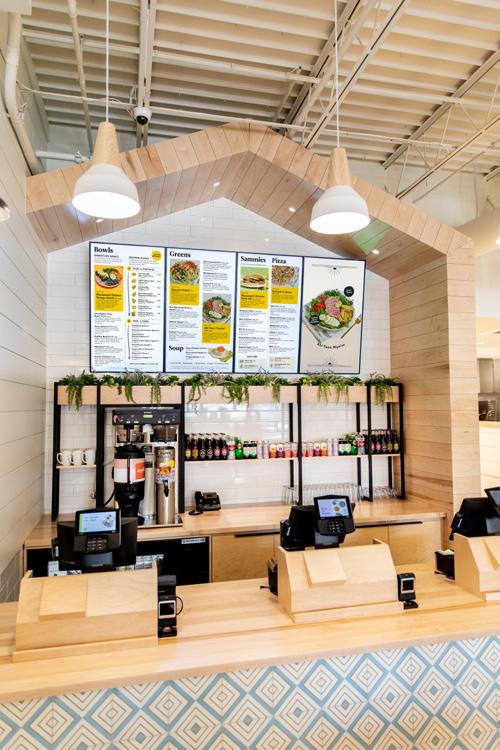
Your voice, your engagement, and your collective impact on policymaking have been a consistent theme in my updates this year. I’m back once more to relay the story of one of the most pivotal efforts for franchising in California, what it means for franchise businesses, and how it may come to your state next year.
Now more than ever, your voice is needed—both to advocate and to educate. Your voice matters for many reasons, but one simple truth rises above the rest: resi dents of the communities you serve almost certainly know more franchise employees than they do franchise owners.
However, too few in our country know— let alone understand—how the franchise business model works. Yet our elected officials are charged with making policy decisions that directly impact your dayto-day business, your employees, and the people you serve. Regardless of your polit ical engagement or views, nobody can deny that lawmakers in Washington or your own state capital or city council need a better education about franchising—and they need to hear it from you on a continuing basis.
At the end of August, California Assembly Bill 257, or the FAST Recovery Act, passed the state senate and was signed into law on Labor Day. This bill is one of the single most detrimental bills to franchising, singling out the quick-service restaurant sector by establishing an unelected board of political appointees to set wages and labor standards for any establishment with more than 100 locations nationwide and a man datory minimum hourly wage of up to $22 by next year.
How did we get here? And, more importantly, what does it mean for you and your franchise business?
California lawmakers attempted in 2021 to introduce an earlier version of the FAST Act, but it never saw the light of
day because its reckless nature would have led to irreparable damage to local quickservice restaurants, employees, and cus tomers. However, nearly 8 months later, California lawmakers saw a window to revive the bill in the following legislative session. While the bill is much improved in some ways (such as removal of the joint employer liability provisions), it was signed into law, despite fierce opposition. IFA members, especially the franchisees who would be affected most, went all in to ensure that California senators understood the ramifications that could arise if this bill came up for a vote.
efforts are under way. Henry describes it as a “watershed moment” for collective bar gaining in the quick-service industry and organized labor’s efforts to transform the franchise sector and take away individual business ownership opportunities. New York, Oregon, Washington, Illinois, New Jersey, and Hawaii are some of the next targets for this, with eyes on many more.
The model put in place by the FAST Act in California should be a wake-up call not only for other states, but also for other sec tors.
In rare agreement, the editorial boards of the Wall Street Journal, Washington Post, and Bloomberg all decried the bill. As the Washington Post wrote, “Other states con sidering adopting California’s model should listen to concerns from business owners and anxious employees, and find better ways to support vulnerable workers.” Bloomberg called it a “terrible idea.”
This entire effort was based on the false notion that labor violations are more ram pant in the quick-service sector than in others. However, the state’s own data shows that only 1.6% of labor violation claims occurred in limited-service restaurants, less than the sector’s own share of employment.
We know that franchises pay higher wages, offer better benefits, train better, and provide career paths, but not enough people outside of franchising do. This singling out of one sector—primarily composed of one business model—shows the target painted on the back of franchis ing. Franchising is one of the single-greatest forces advancing entrepreneurial opportu nity, yet too few understand how it works.
The IFA predicts that the costs associ ated with this bill could increase prices for California restaurant customers by about 20%, with some businesses saying it could be as much as 40%. One IFA member predicts operational costs could rise by $450,000 per unit per year. Yet, the voice of special interests prevailed—and the gov ernor signed the bill into law.
However, the larger issue from here is that what happens in California does not stay in California.
Service Employees International Union President Mary Kay Henry recently said she hopes the bill will inspire similar measures across the U.S. We know that it already has. Concerning to both small business owners and consumers nationwide, six states have already indicated similar
While it may all seem like all bad news, it is not too late. The IFA is working to give California voters the chance to have a say whether or not they want to face higher prices, job losses, and reduced opportunity for business ownership.
The next step starts with you sharing your good news story everywhere you go. Educate lawmakers on the opportunities you create, the ways you serve the com munities where you operate, and how franchising has helped millions achieve the American Dream. You are already doing the hard work. It’s time to take the credit.

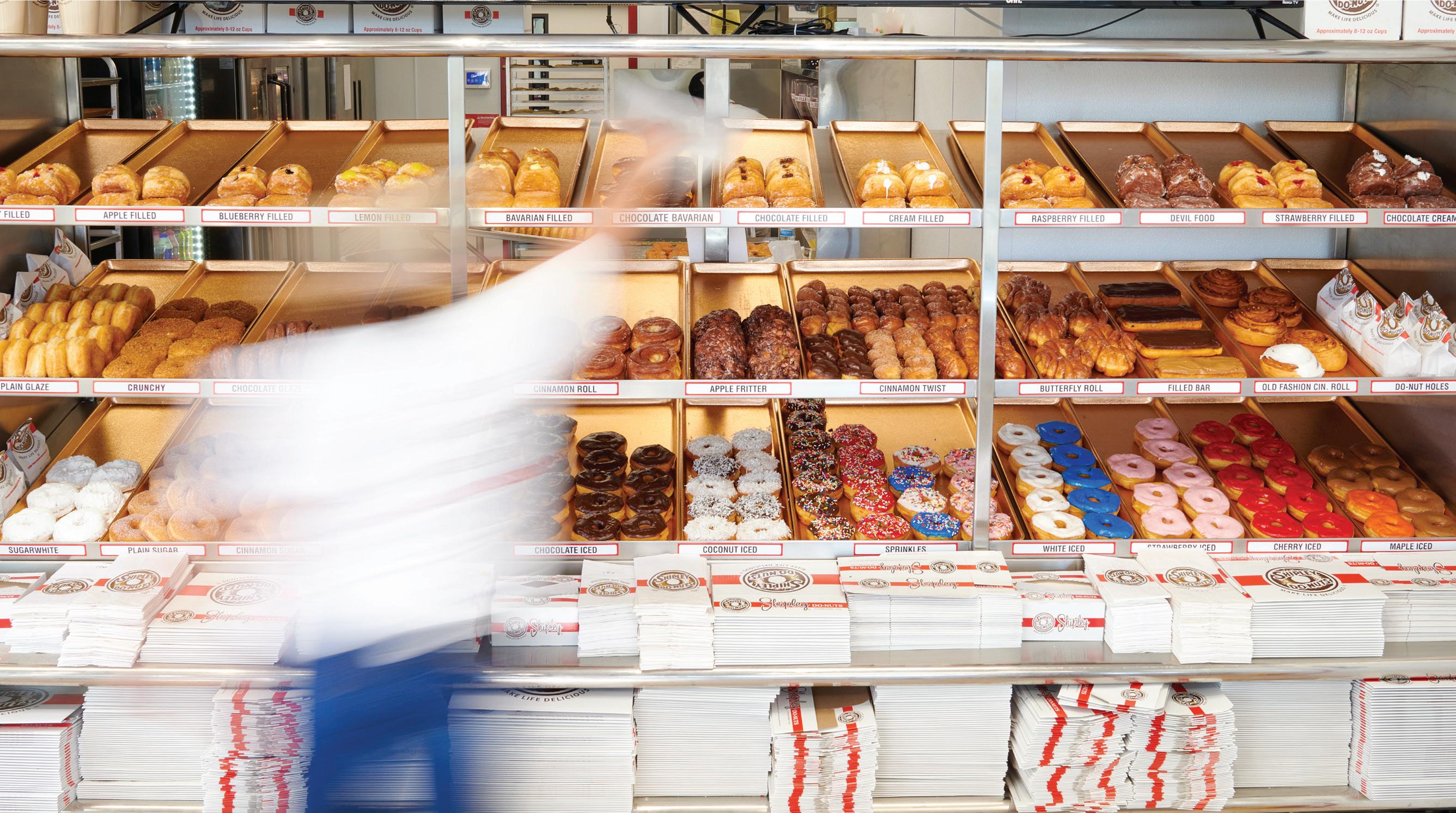

own data! Adopt a mindset of curios ity, open-mindedness, and collaborative partnership and you’re on your way to suc cessful coaching interactions.
Written By LAUREN OWEN“Advice is a dangerous gift, even from the wise to the wise, and all courses may run ill.”
— J.R.R. Tolkien, The Fellowship of the Ring
Are you a consultant, district man ager, or multi-unit franchisee confident to advise your manag ers and district reports about marketing, operations, or human resources—but who struggles with conversations about financial issues? Or perhaps you’re knowledgeable about numbers, but can’t get your people engaged around this important topic?
Here are my top tips for creating finan cial insights and, most importantly, driving action. To help get you in the right mind set, I’ll refer to your conversation partners (whether managers or owners) as “clients.”
Tip #1: Switch from consultant mode to coach mode. Unlike subject matter expert consultants who excel in telling clients what to do, effective coaches ask insightful and probing questions that lead clients to discover their own solutions. The goal is to get people to act. This is more likely when clients better understand their current situation and “own” their action plan. While it seems easier to advise (as you are the expert), leading the client to discovery positions the solution as their idea. People don’t argue with their
Tip #2: Ask powerful questions. Good coaches ask questions that give clients opportunities to clarify their understand ing of the issues, state what they believe is important, and share more than just facts. Powerful questions provide the opportunity to gather information about your client’s agenda, clarify your understanding of the issues, and connect with and understand the client better.
Tip #3: Ask open-ended questions. Don’t ask questions that begin with Why. Questions that begin with How, What, When, and Where cannot be answered with a simple Yes or No and yield more-useful information. Why not ask why? Asking someone to justify a position can be interpreted as accusatory and may lead to defensiveness instead of collabora tive problem-solving. So:
NOT Why are your sales so disappointing?
INSTEAD What would it take to achieve a high-functioning sales team?
(A list of 95 open-ended financial coaching questions and other tools are available on the Profit Soup website).
Tip #4: Be prepared! Before a meeting, make sure everyone is on the same page. 1) How will you know the visit was a suc cess? Clearly define the outcomes. 2) What are the best strategies for achieving those? Develop an appropriate agenda. 3) What information will you need to support the agenda? When will you need it, and who will provide it? Do you have the pertinent financial statements—the most recent, including a percent of sales column and a year-over-year comparison so you can dis cuss trends? Is there an accurate balance sheet showing the trending of debt and cash? Have the essential KPIs been identi fied and the current figures gathered? Are there relevant systemwide benchmarks for comparison? 4) What preparation would make the visit more efficient and productive? Confirm the attendees’ respon sibilities. 5) Confirm logistics such as date, time, and location. Plan ahead for a meet ing free from interruptions.
Tip #5: Focus the conversation on the desired outcomes. Clarify the meeting’s purpose. Confirm the agenda. Execute the agenda. Assess: Where have you been? What’s going well or not? Prioritize: What
are the most important things to work on? Brainstorm: What drives superior performance? What’s getting in the way? Measure: How will you measure success? What are the targets? Engage: What are the most essential elements of the plan?
Tip #6: Always, always end the meeting with a clear call to action. Before the meet ing ends, summarize: 1) Who will do what by when? 2) What are the major milestones and timelines that reflect progress? 3) Set a date to evaluate progress.
Tip #7: Reflect and focus. Within a day or two, follow up with a quick chat or email for coach and client to reflect and share things that went well based on the visit and the goals and commitments agreed upon. Define what will confirm evidence of improvement, related ideas that came up since the visit, things the client wants to continue working on, things the coach will concentrate on during the next visit, restate call(s) to action, and confirm the date for the next visit.
Tip #8: Practice! As with any new skill, practice, reflection, and observation help you improve. Take time to assess your effectiveness and seek opportunities to lift your skill set. I’ve found these three steps work well. 1) Recall a time when someone asked a question that made you dig deep, gain insight, and take action. What was the question? What made it so powerful? 2) Refrain from giving advice for one day. (Bonus points to parents of teenagers who achieve this!) You might be surprised at how often you find yourself slipping into “expert” mode. Pro tip: Use that time to ask questions that lead the client to their own solutions. 3) Observe how expert inter viewers use open-ended questions to get interviewees to relax, reflect, and open up.
Don’t get me wrong: Consultants don’t need to give up sharing expertise. But bolstering coaching skills can take your financial conversations to a new level—one that makes an impact, drives action, and gains traction.
Lauren Owen is a business coach and facilitator who helps closely held businesses, particularly family businesses, build effective teams and execute successful ownership transitions. She is a long-time associate, frequent Profit Soup collaborator, and contributing author for Profit Soup’s new workshop, “Level Up Your Financial Coaching: Profitable Growth from Day 1.” Learn more at ProfitSoup.com, or email her at lauren. owen@profitsoup.com.





After a rocky start to the year when most market averages fell by 20% to 30%, July and early August saw a healthy rebound. Investors convinced themselves that the U.S. Federal Reserve was going to reverse its hawkish course when it next met to set interest rate policy in September and a snapback in risk assets commenced.

However, Chairman Powell’s August speech in Jackson Hole—which was over in less than 10 minutes—was unequivocal in reemphasizing the body’s intent to do “whatever it takes” to get inflation wrestled back in the bottle. Powell invoked mem ories of then-Chairman Volcker’s historic fight back in the early 1980s, and reiterated earlier testimony that there may well need to be economic pain and a period of hard ship in order to achieve price stability—a code phrase for inflation more in line with the Fed’s long-term target of 2%.
Barring unforeseen events of a political nature, we suspect markets will stay rangebound and volatile through year-end, with little to force them strongly up—or down. Investors, corporate leadership, and global citizens alike are struggling to find their footing in the new normal. While human nature yearns for a return to the “before times,” the sooner we all adjust to the fact that we’re writing a new book—not just a new chapter—the sooner we can home in on what the future may hold. Let’s discuss some of the intermediate to longer-term headwinds and tailwinds currently at play that will influence investing and markets in 2023 and beyond.
Negative indicators include the following:
• Global supply chains are being repo sitioned. Long before Russia invaded Ukraine and disrupted the energy, grain, and raw materials markets, China’s
rolling Covid shutdowns and tariff spats with the U.S. were causing many domestic and European companies to rethink where their products were manu factured or assembled. Exacerbating the issue were backups at U.S. ports, weath er-related traumas for shipping (e.g., the Rhine) and ports, and, more recently, China’s show of military force in and around Taiwan. It’s a toxic cocktail of events pushing companies toward local manufacturing and distribution schemes. This may well turn into a long-term tail wind for specific locales as infrastructure is repositioned closer to end markets— but it could also be a drag on margins in the meantime.
retain any sort of pricing power, compa nies will need to be very clear about their unique value propositions.
Positive indicators include the following:
• Schools are back open. Life is beginning to fall into some semblance of a new order. With more kids back in school, more parents are able to commit to reentering the labor force, even if in a more flexible capacity. And businesses are settling into working through their own post-reopening blend of in-person, remote, or hybrid work. As new routines increasingly become established, compa nies should have a more reasonable time planning for inventories, sales, staffing, and real estate needs. The clarity gained from an ability to plan more accurately should trickle through to increased inves tor confidence in corporate guidance.
• Everyone needs time to anchor to the new normal (higher) cost of capital. It’s tough to remember that we have been in “ZIRP” (zero interest rate policy) for more than a decade—and most global central banks are raising rates back toward historically more “nor mal” levels. While inflation is running hot around the globe, interest rates in general have climbed back to long-term averages. Indeed, the mortgage rates that produced the 2008 global financial crisis were between 5.5% and 6%. Until companies and citizens have woven these more normalized rates into their analy sis, business expansion, home purchases, M&A, and capital expenditure (capex) may remain fitful.
• Margins are likely to be pinched as costs from labor inputs, expanded capex, higher commodities costs, and the like are absorbed. As pent-up demand surged early in post-Covid reopening, compa nies were able to pass at least some of these on. We suspect that will become more challenging to do moving forward, and are already seeing signs of this. To
• Mid-terms have passed. The politi cal season always brings its share of hand-wringing and contention, and the 2022 mid-terms were especially fraught with big, polarizing issues. On the first Wednesday in November, however, it will all be over (at least until the 2024 cycle starts sometime in 2023), and investors can turn to focusing on eco nomics and corporate profits.
• Substantial fiscal stimulus from 2021 and 2022 spending packages is headed into the system. Turning on the fiscal stimulus even as the Fed is withdrawing monetary stimulus has not been done in the past few cycles, and should lend support to economic activity. In fact, opportunities in infrastructure, energy, health care, education, and a host of other industries could well pique inves tor interest as 2023 commences, giving interesting options for sideline-weary cash holders.
It’s important to remember that in any given year, markets are always faced with challenging headlines and dour prognos tications. Parsing through them, however, can often lead to interesting insights and opportunities for those who have the wherewithal to think and act long term.
Carol Schleif is deputy chief investment officer at BMO Family Office, a wealth management advisory firm delivering investment management services, trust, deposit, and loan products and services through BMO Harris Bank. To learn more visit www.bmofamilyoffice.com.
your footing in the new normal



working at the PostNet store since early in my teenage years, the thought of joining law enforcement was still an option. After graduating, I became a full-time, salaried employee of the business. Despite enjoying aspects of the company, I still had an itch to join the police force. So, a little less than 2 years later, I went to college to pursue that goal.
Written By JERRY KAHNLeaving a lasting mark on society is something that many people wish to do throughout their lives. Whether it’s starting a foundation in the name of a loved one or starting a family business, leaving behind a legacy is a goal many indi viduals reach for. Franchising can be the avenue that helps people achieve that legacy.
Many franchise systems are developed in a way that allows the owner to pass the company down generation after generation. We all know at least one business that has been in a family for decades. For franchi sees, the path toward creating a family legacy can be less complicated than starting a business from scratch and sustaining it for multiple generations.

In addition to brand recognition, fran chises have built-in systems that provide franchise owners with the necessary tools to be successful. With these systems in place, family members who take over the business will have systems to fall back on and succeed. In addition, they will have a family of franchisees and executives at headquarters to answer any questions.
My family provides a prime example of a franchise that has developed and is still establishing itself as a family legacy busi ness. My father opened our PostNet center in 1992 with the intent of creating a cul ture where it was important to establish a relationship with the customer, as opposed to viewing them as a means of completing a transaction. Now, some 30 years later, I have followed in his footsteps with my own goals and vision for the company.
When I was a senior in high school, I had two paths I wanted to pursue: law enforce ment or working in the family business. My father never hid his hopes of me following in his footsteps, but he never pressured me into joining the business. While I had been
A year and a half into my college career, I began missing the day-to-day of working at the store, as well as the interactions with customers. That’s when I chose to give up law enforcement and return to the family business. Shortly after, I became the gen eral manager and began taking care of the day-to-day operations of the center, with my dad strictly handling the administra tive aspects of the company. That’s when my foundation and future in the business were cemented. That happened around 2001 or 2002.
Part of creating a family business is tak ing lessons you learned from the previous owner and applying them to your plans. Working with my father for the better part of two decades, I learned plenty of lessons about running a business. Building rela tionships was important to my dad. As a 14-year-old working at the company, I learned everyone’s name and addressed them accordingly. Building those relation ships and developing that soft skill set built the foundation that established the success ful business we are running today. Each day, I work at continuing that tradition, while also pushing to always perform and be bet ter than the day before.
While maintaining a business that can be passed down is a great goal, some strate gies must be developed to ensure you keep a good work/life balance. When work ing with a family member or spouse, it is important to develop boundaries. Work issues should remain at work to help protect your personal and family time. One should not bleed into the other. While two people might be working in the same space at the same time, if you let that consume every aspect of your professional and personal life, you could be headed down a dark path that may jeopardize your relationship.
For example, my fiancé and I had a long conversation before she came on board at the company. We decided that if we had to discuss work at home, we would set a start and stop time for the discussion. That way
we are doing our best to prevent work from flowing over into our personal lives. We wanted time to process family situations and emotions without constantly thinking about the next work issue. That has gone a long way in ensuring that our personal relationship isn’t affected by work.
Keeping a profitable business and passing it down through generations can be diffi cult. Times change year after year, so it’s necessary to address those changes while keeping the family culture intact. My father was able to do so, and I strive to continue that tradition by continuing to grow the business every day. I want the company to thrive after I’m no longer in charge of it. With my children still being younger (my oldest is 16), I don’t know what the future holds for them. They may not want to be involved in the family business. But even if a longtime employee decides to purchase it, I still consider that part of our legacy, and I want to put them in a position to thrive and succeed. That’s what building a legacy is all about.







providers are reducing loan advances, underwriting requirements are tightening, and equity requirements are increasing.
Moving into the fourth quarter— historically the busiest time for franchise M&A and financ ing—optimism is fading for an end-of-year rush of successful deal activity. 2022 will be remembered as one of the most chal lenging environments franchisees and multi-unit brands have ever experienced. Unfortunately, these difficulties come after years with different but equally challenging factors. Brands and franchise owners, lend ers, investors, and suppliers ask, “When can we catch a break?”
One issue concerning both buyers and sellers is the recently passed legislation in California (AB 257 or the FAST Recovery Act) mandating higher minimum wages, benefits, and working conditions for many QSR operators. Under this, minimum wages in California could increase up to 50% in January 2023, to $22.50. While the industry will likely support a referen dum delaying implementation until 2025, the legislation may curtail deal activity in California for the foreseeable future. While this targeted legislation excludes most fran chise owners, operators who are affected may see an immediate impact on valuations and transactions. Additionally, there are concerns that similar legislative efforts will spread to other states.
In addition to minimum wage efforts, higher interest rates and the availability of capital are affecting transactions to a greater degree. Interest rates have doubled over the past year, additional increases are expected for at least the balance of the year, and the availability of capital has decreased as the economy teeters on recession. Capital
Availability is also constrained by grow ing covenant and payment defaults on existing loans. As margin pressures reduce profitability, more operators are finding themselves in covenant default or in dan ger of default, adding additional pressure to financial institutions and operators. Development and remodeling capital is often cut, putting pressure on operators to use cash reserves to complete projects. The situation is compounded in Tier II and III brands, where capital is harder to secure. In M&A transactions, alternatives to traditional financing are becoming more prevalent. Buyers with committed capi tal will have an advantage in the current environment, as sellers place increasing importance on a buyer’s ability to close.
Operators across the industry have been affected by rapidly increasing costs and labor issues, which, in turn, affect transac tions. Covid-related add-backs and other adjustments to EBITDA for one-time expenses are no longer credible. Many sellers still think they can market their business based on 2021 results. Buyers look at current performance as a baseline against 2019 and, in many cases, factor in another six months of margin compression when evaluating acquisition opportuni ties. The inability to forecast accurately also sidelines many industry consolida tors that either have their own operational challenges, or are waiting for a more stable deal and operating environment. Sellers contemplating a transaction should address margin pressures and outlook up front, manage surprises, and guard against re-trading because of declining trends and cost pressures.
These differing expectations promote an increasing gap between buyers and sellers. Sellers contemplating deals in the current environment should be prepared to get cre ative to bridge this gap. With traditional capital availability constrained, both buyers and sellers should review other alternatives including seller paper, non-bank lenders, earn-outs, and rollover minority equity positions to complete deals. We expect the valuation gap to widen through the balance of 2022, as margin pressures and interest rate increases show little sign of abating in the near term.
Brands, especially Tier I restaurant con cepts, continue to play a key role in the approval or rejection of transactions. Franchisors continue to “steer” transactions to favored franchisee buyers—especially when the brand has a financial incentive in the completion of a transaction. Frequently, a transaction is inked between buyer and seller only to be rejected or modified at the franchisor level for a host of reasons. As sellers prepare to market their businesses, anticipating franchisor obstacles is criti cal to success. This is often a Catch-22, as sellers may want to avoid communicating a transaction with a franchisor until the asset purchase agreement is executed and presented in order to avoid brand influence. With the current activism in many brands, this strategy can backfire if the brand has issues with the buyer or prefers an alterna tive buyer for the units. The best practice is to have a backup buyer in mind if problems are anticipated.
The adage “time kills deals” has never been more accurate. With rapidly rising costs, interest rate swings, geopolitical develop ments, and government intervention in franchising, completing transactions on an accelerated timeline has never been more critical. How can sellers keep transaction timetables on track?
Landlord relations are critical for receiv ing timely consent and lease assignments. Solid relations and communication saves time in the closing process and mini mizes last-minute landlord demands. Additionally, sellers or their counsel should prepare initial forms of LOI, APA, and other documents in advance. Before marketing your business, ensure that all documents are in order, including financial statements, leases, and franchise agree ments.
As we conclude 2022, the path to the clos ing table has never been more strewn with obstacles. Minimize disruptions with focus and preparation on what can be controlled to increase the odds of a successful trans action.
Carty Davis is a partner with C Squared Advisors, a boutique investment bank that has completed hundreds of transactions in the multi-unit franchise and restaurant space. Since 2004 he’s been an area developer for Sport Clips in North Carolina with more than 70 units. Contact him at 910-5281931 or carty@c2advisorygroup.com.





so historically? Immigration. We simply must solve the political impasse and allow immigration of low- and non-skilled work ers into the workforce. If that can’t be done, we will see a rapidly accelerated substitu tion of capital for labor, eliminating the very jobs that allow most workers entry into the workforce.
What to do
Written By DARRELL JOHNSONIn my previous column, I wrote about what inflationary expectations will be in 2023 and beyond. To reiterate, inflation will start easing but will stay well above most of this century to date. Whether a franchisor, franchisee, or sup plier, we all have lost purchasing power and experienced declining margins since 2021— and will continue to do so next year. The result is continued pressure on margins that have already had a lot of pressure. What can we do about it?
For most businesses, operating costs are largely driven by labor, cost of goods sold, energy, and overhead expenses such as rent, insurance, and capital costs. Understanding how each of these four cat egories of expenses will behave in 2023 will help inform our strategy for taking pressure off margins.
Labor. There are 50% more job open ings today than at any time before the pandemic. Yet there are 755,000 fewer people employed today than at the start of the pandemic, despite an increase of 4.2 million in the population of people ages 16 and older. The unemployment rate is near a half-century low. So how did this happen? The big story is a 9.2% drop in employment among workers ages 65 and older and a 3.0% decline among workers ages 20 to 24. The Baby Boomer demographic is nearing its peak, which means they are permanently leaving the workforce in large numbers.
The next three demographic groups aren’t able to fill the gaps. How did we do
The second statistic, a decline in work ers ages 20 to 24, has a silver lining for franchising. One of the strengths of the franchise business model is entry-level job training that leads to career growth. As I’ve written many times, we must make this a marketing hallmark of franchising. Perhaps relabeling some of the positions as apprenticeships focused on fundamental job skills like teamwork, customer service, POS, accountability, and so on will appeal to the 20-somethings on the fence about their future.
Cost of goods sold. While commod ity prices always experience price swings as weather and other factors influence the supply/demand balance, recent increased prices were in large part the result of global supply chain distribution issues. Those are working their way out, and we should see (and already are seeing) a reversion to his torical pricing trends.
Energy. There is every indication that fossil fuel energy costs will remain elevated for years to come. One of the consequences of pushing into greener sources is less investment in traditional energy produc tion. That, in turn, keeps supply tighter and prices higher.
Rent, insurance, interest rates, etc. One of the most significant longer-term impacts of the pandemic is playing out in the retail/ office/commercial space. The permanent patterns of changed consumer behavior will change the demand requirements of space and likely take pressure off the historically constant rising cost of rents. Other over head costs, such as insurance, are likely at a permanently higher plateau. And as long as the Fed views the unemployment rate as the root cause of inflation, we can expect elevated interest rates well into the future.
If we are likely to experience continued input cost pressure (labor, in particular, is sticky upwards, i.e., wage rates go up and don’t go down), capital for labor substitu tions may be part of the solution but can’t compensate for all of the margin loss we will be encountering. We must also deal with price increases. Consumers are more accustomed to rising prices than they were pre-pandemic, but that doesn’t mean you can hike prices without being careful not to end up losing more than you gain.
Recently, I had a conversation with a franchisor CEO that was enlightening. With considerable franchisee pressure, he went along with testing a modest price increase. The result for the franchisee testing it was a significant loss of weekly revenue, which even with prices lowered to the previous level took many weeks to recover from. The lesson is to proceed with caution, but if the cost pressures noted above are accurate, you must proceed or see serious margin erosion. Here are some ways to do so.
• Adjust discounting and promotions and differentiate which products or services can be adjusted with the least consumer reaction.
• Reengineer processes. The capital for labor substitution trend is real and needs your attention.
• Develop the art and science of price change. This starts with a solid base of detailed product or service cost and margin benefit. Across-the-board price changes are very risky, but adjustments to specific products or services can have a much better outcome. Which ones to change, and by how much, requires data.
My email signature contains a quote from W. Edwards Deming that we all should remember: “Without data you’re just another person with an opinion.”
Darrell Johnson is CEO of FRANdata, an independent research company supplying information and analysis for the franchising sector since 1989. He can be reached at 703-740-4700 or djohnson@frandata.com.
As

For

AD INDEX
AFC / American Family Care 41
American Freight
Angry Crab Shack 21
Asurion Tech Repair & Solutions (UBreakiFix) IFC Batteries Plus 35
Broken Yolk Cafe 29
Buddy's Home Furnishings 47
Church's Chicken 31 Dogdrop 71 Dogtopia 63
FYZICAL Therapy & Balance Centers
HomeTowne Studios by Red Roof
Hungry Howie's Pizza
International Franchise
Jersey Mike's Subs
MFV Expositions
Modern Market Eatery
MUFC Save the Date 80 - IBC
Palm Beach Tan 75
Pet Supplies Plus 15
PetWell Clinic 51
Red Roof Inn 25
RockBox Fitness 73
Royal Aloha Franchising DBA The Bad Ass Coffee Company 55
Scooter's Coffee 7
Self Esteem Brands 57
Shipley Do-Nuts Franchise Co. 67
Sky Zone c/o CircusTrix 9
Smoothie King 39 Speed Queen Laundry 1
Taco Johns 37
Teriyaki Madness 19 The Human Bean 61
Urban Air Adventure Park / Unleashed Brands BACK COVER
Vitamin Shoppe Franchising LLC 13
Wienerschnitzel 69




Peter Diamandis

New York Times Best-Selling Author, Innovator, and Founder of The X PRIZE
Col. Nicole Malachowski

First Woman Thunderbird Pilot, Combat Veteran, Fighter Squadron Commander, White House Fellow & Adviser, and Indomitable Spirit



















